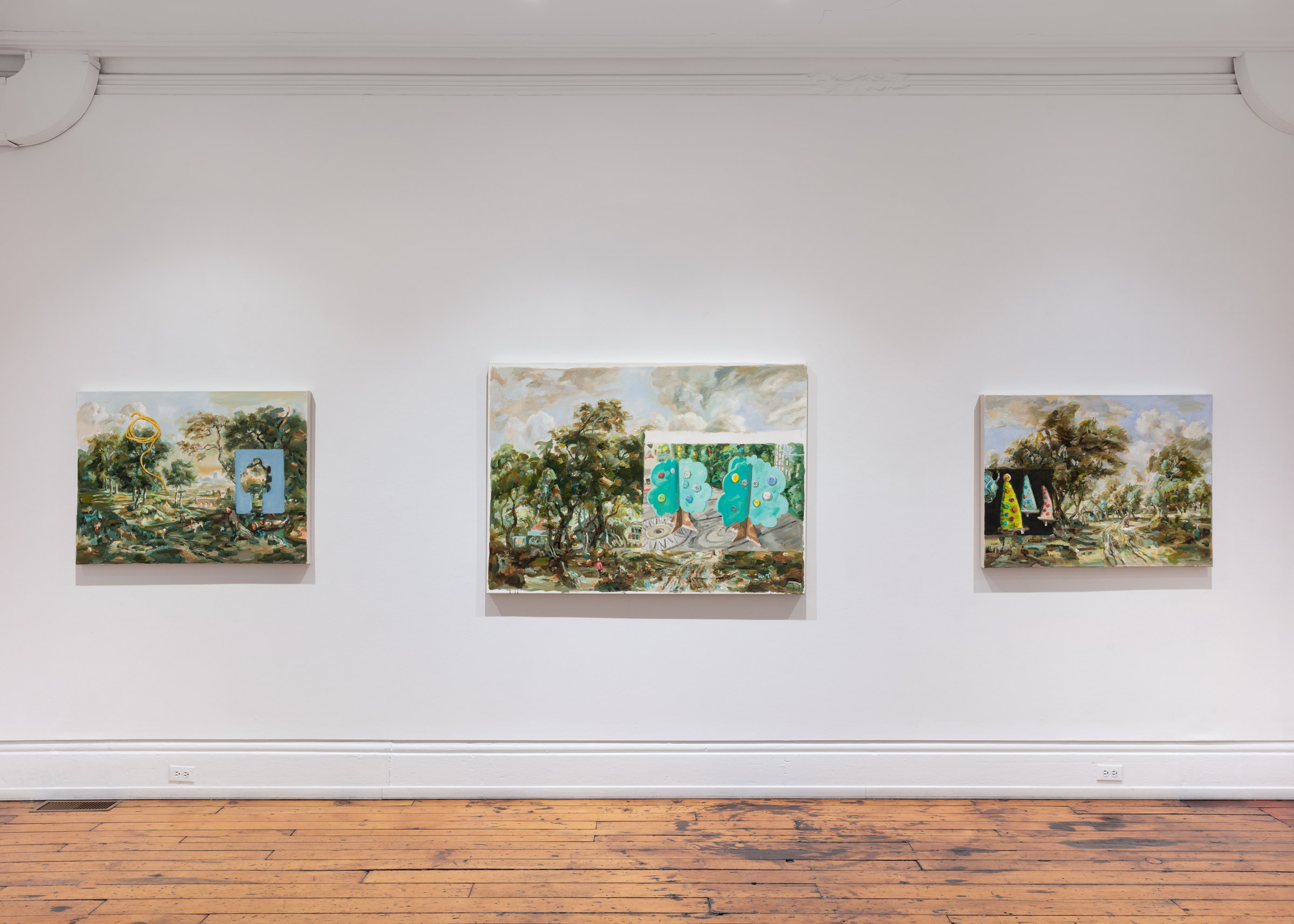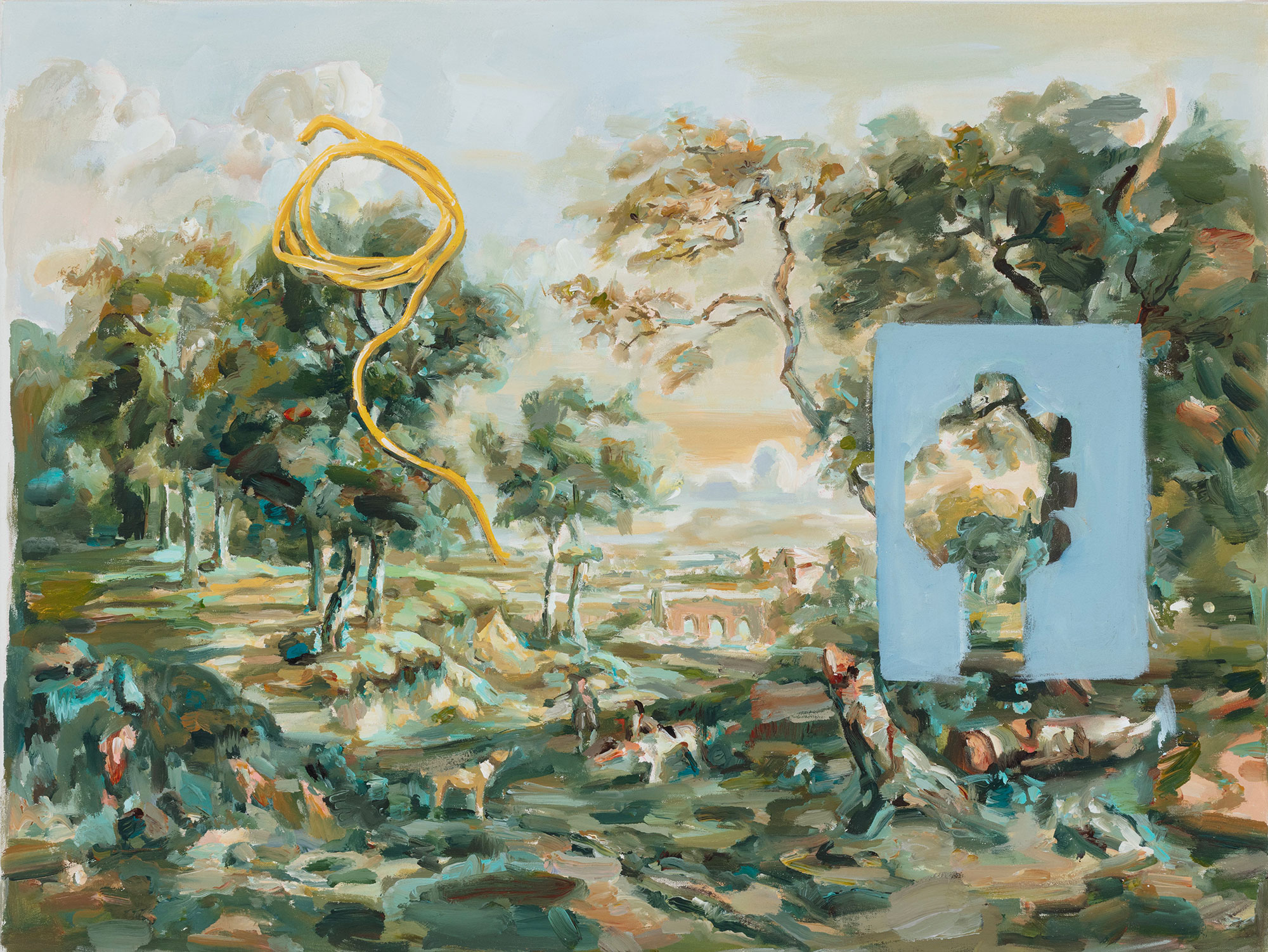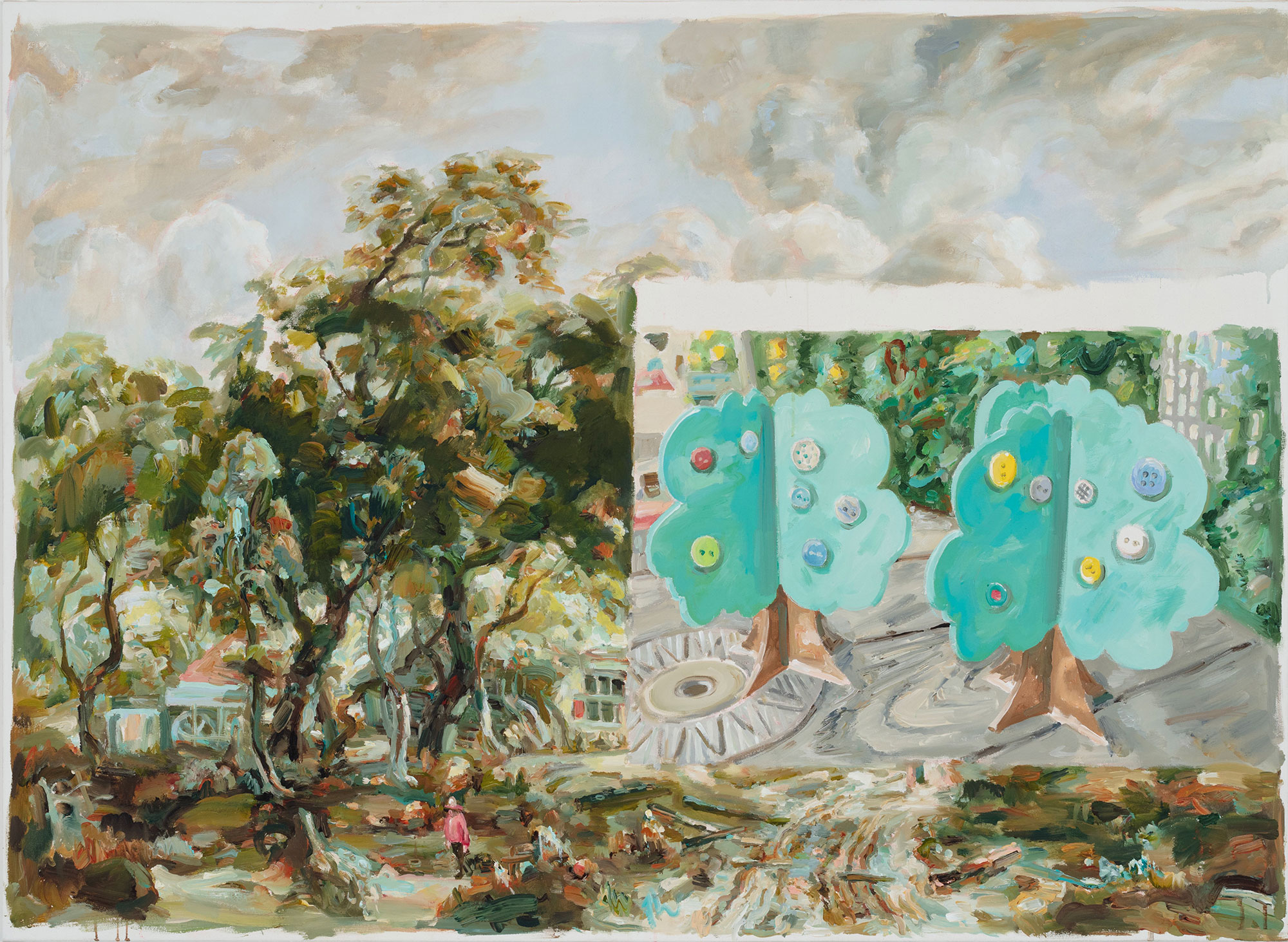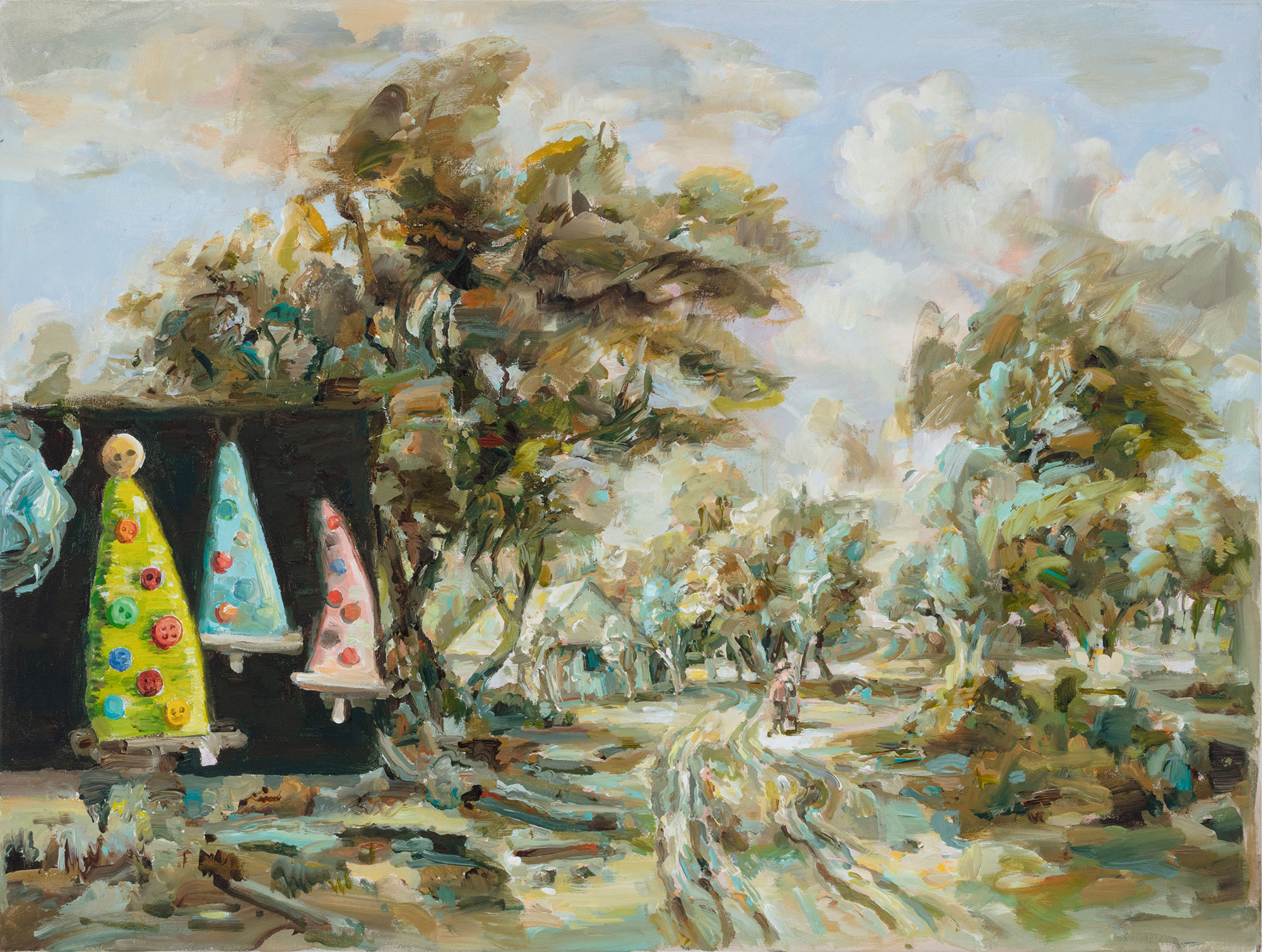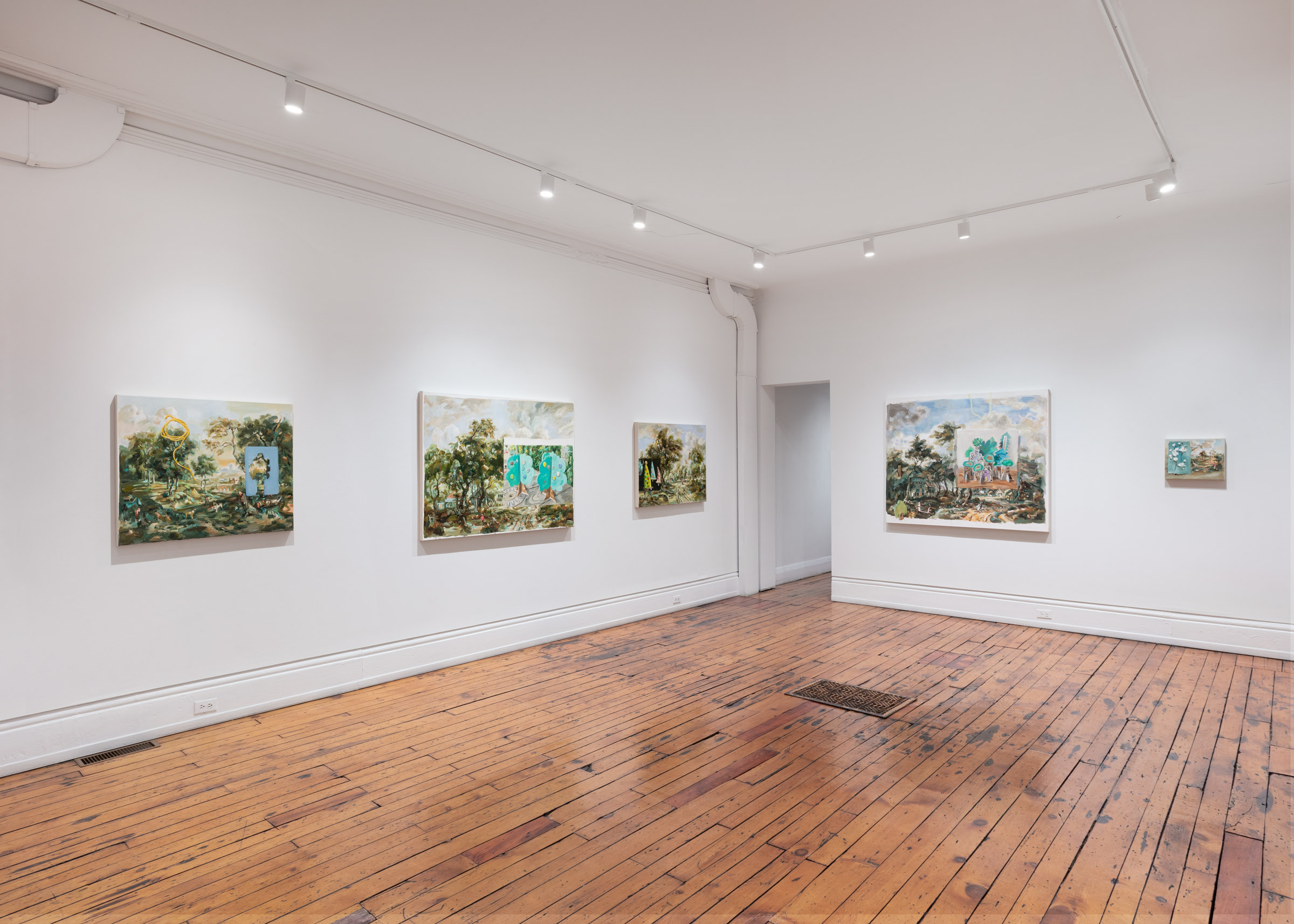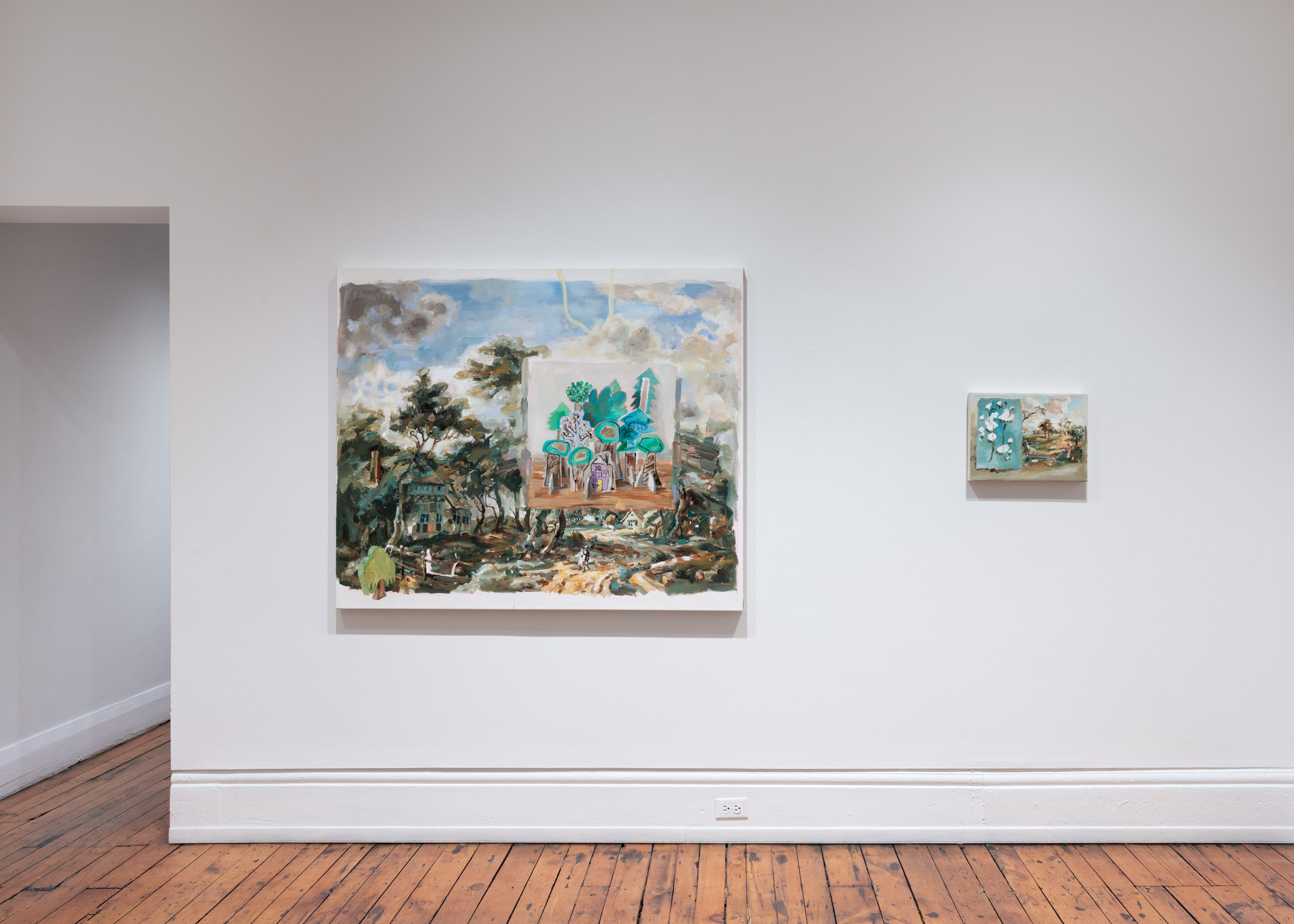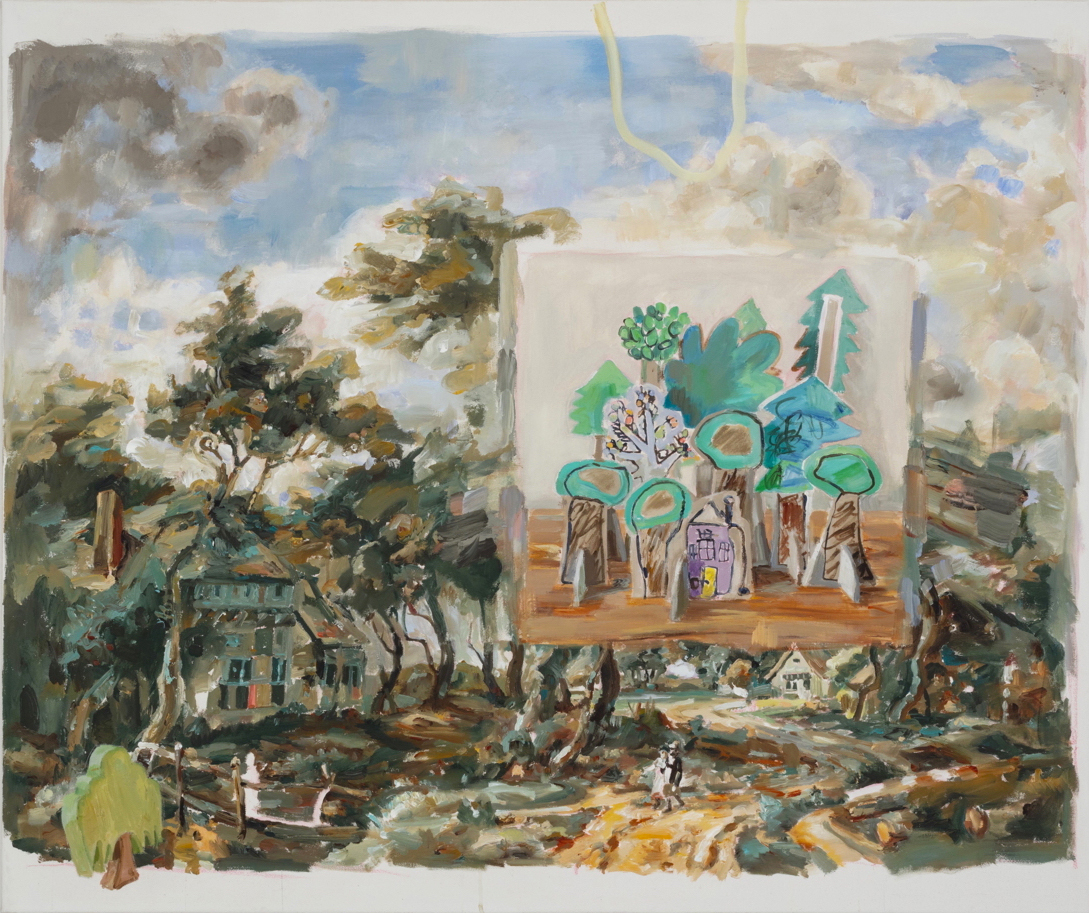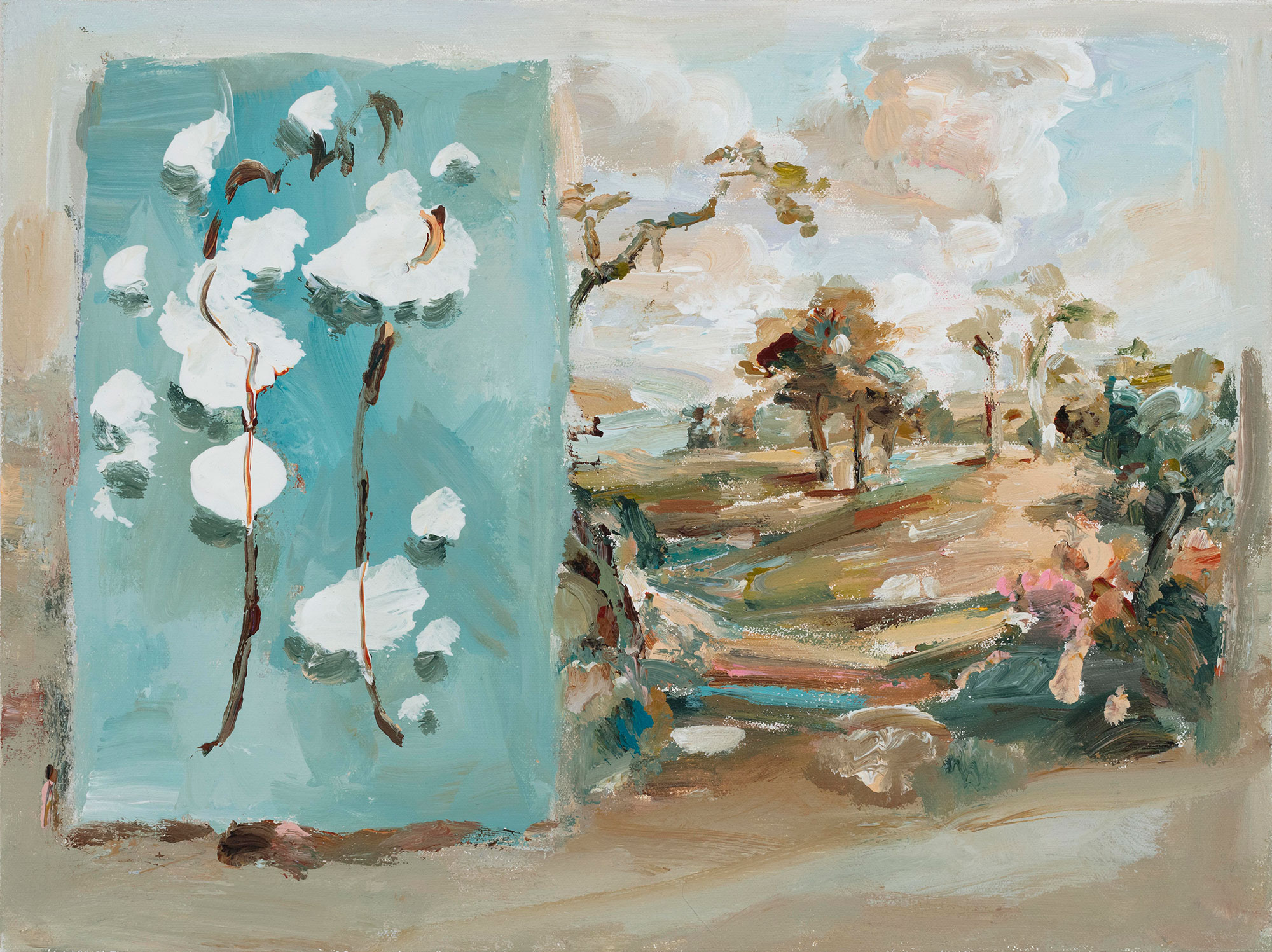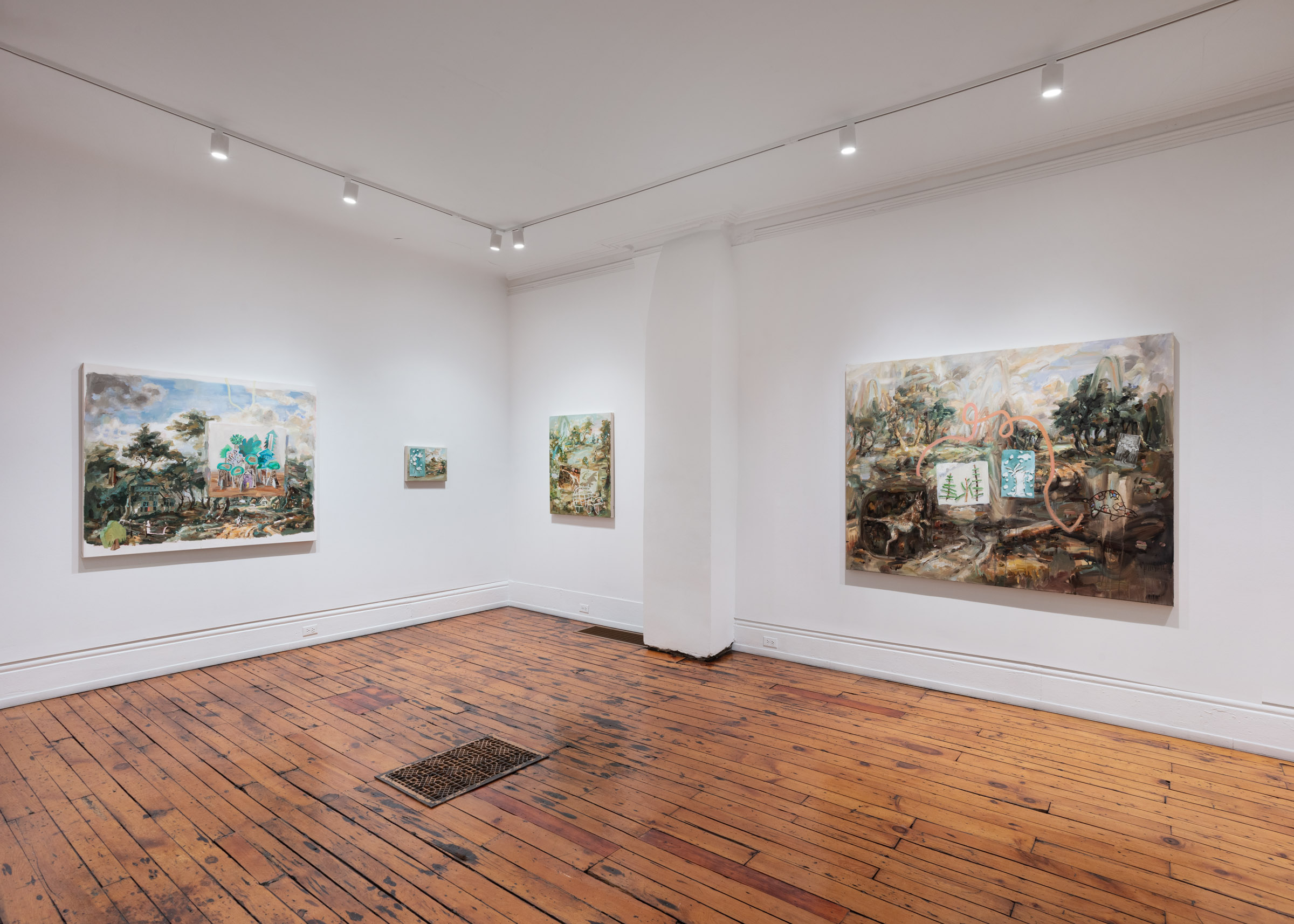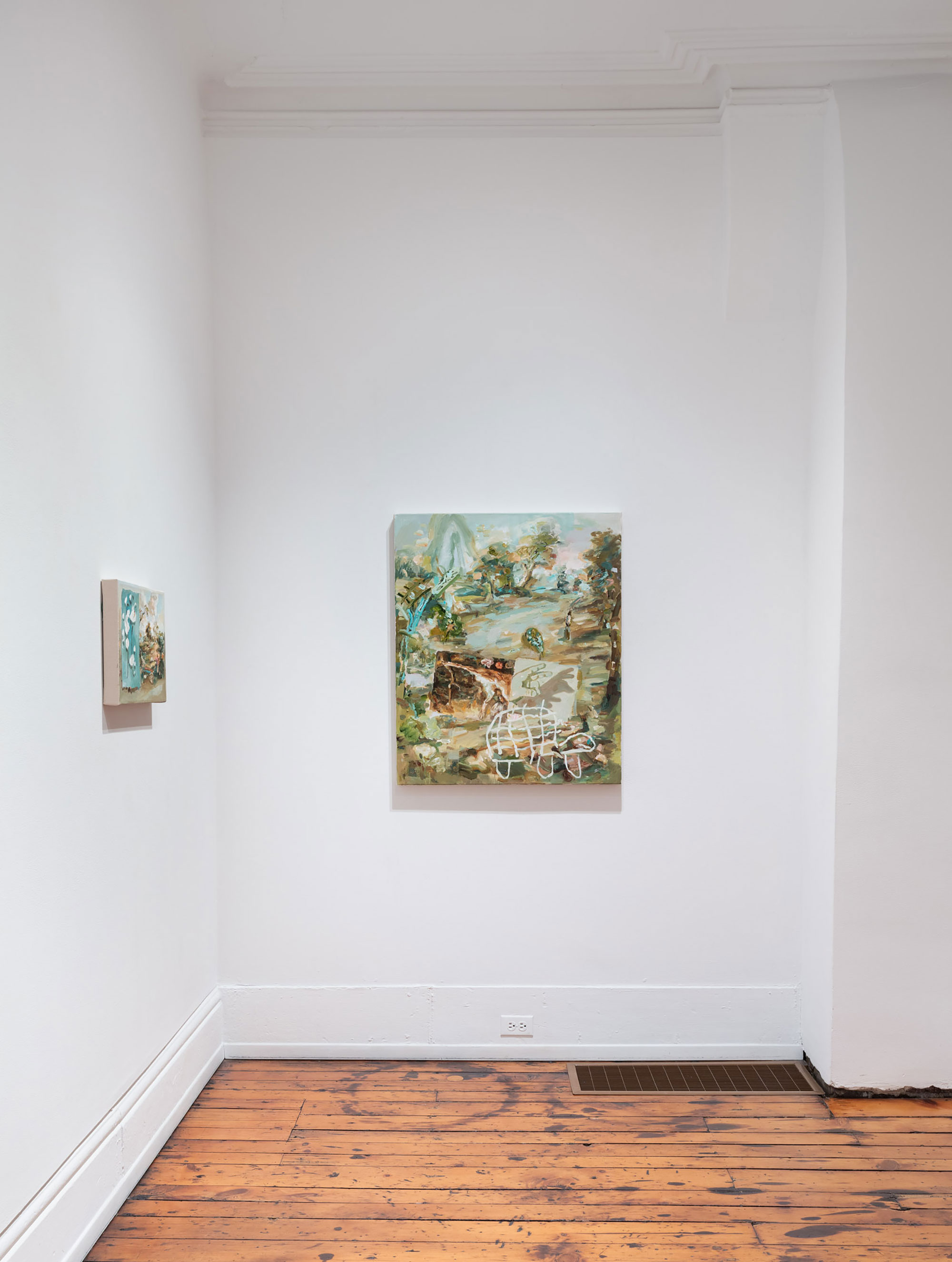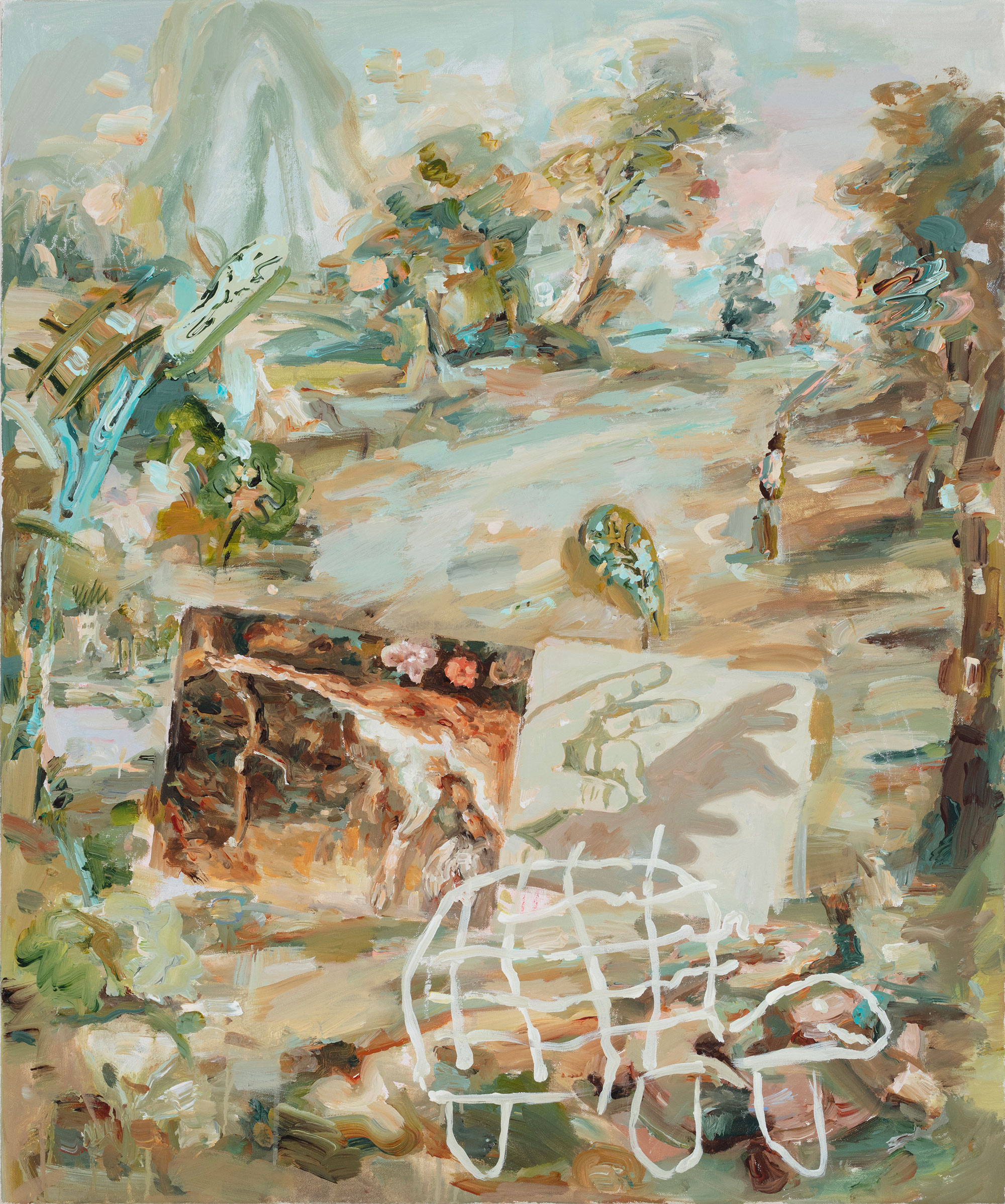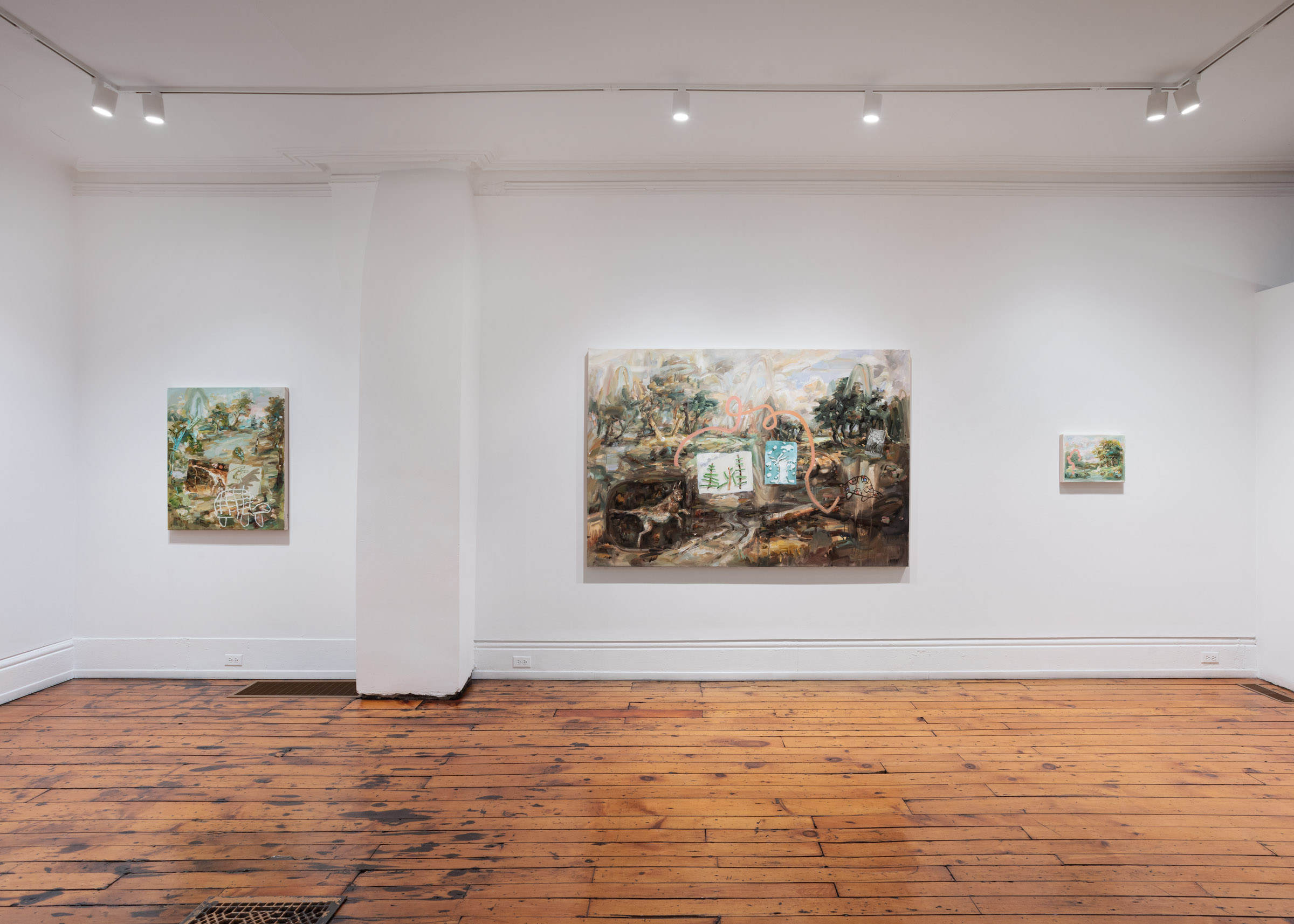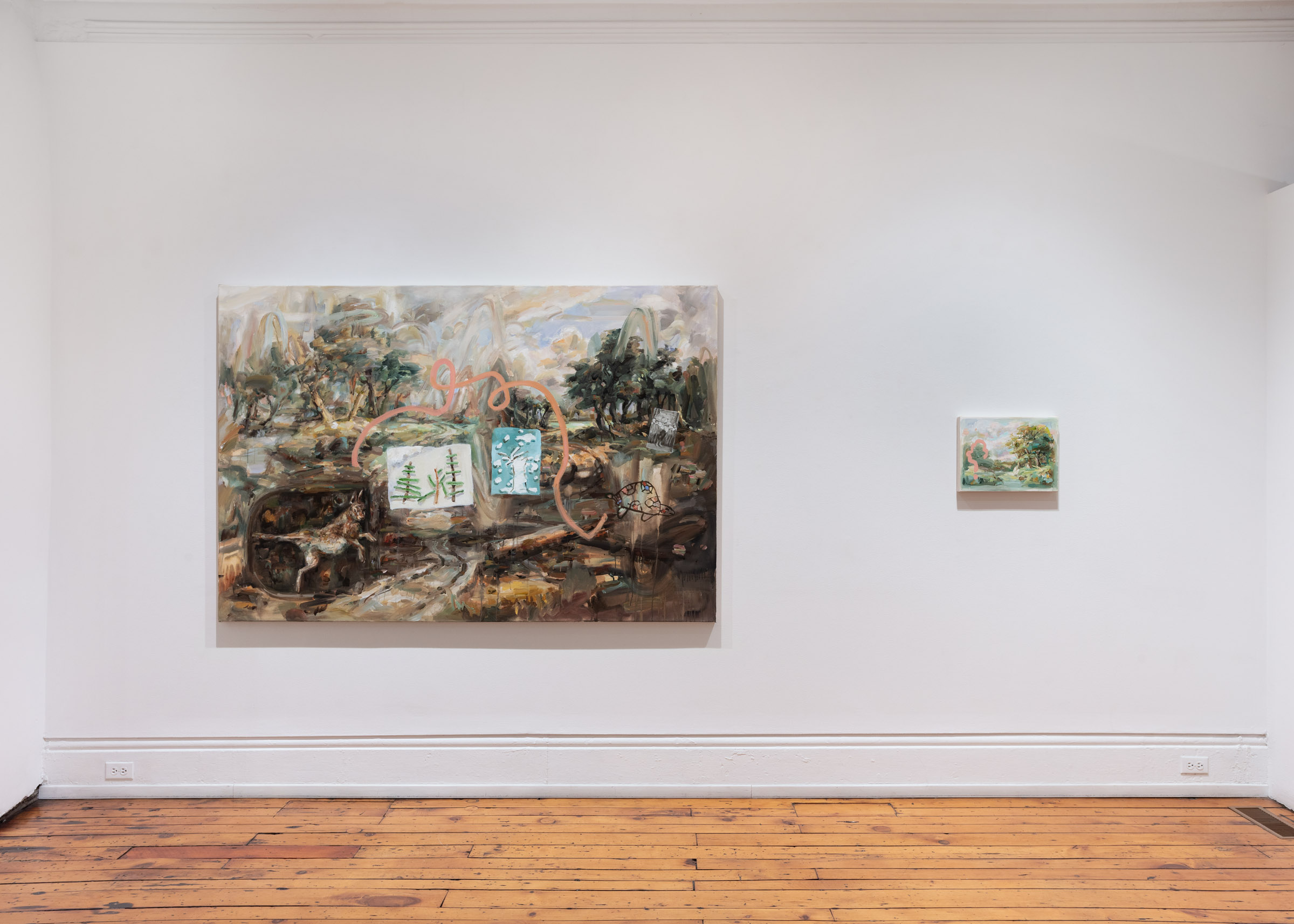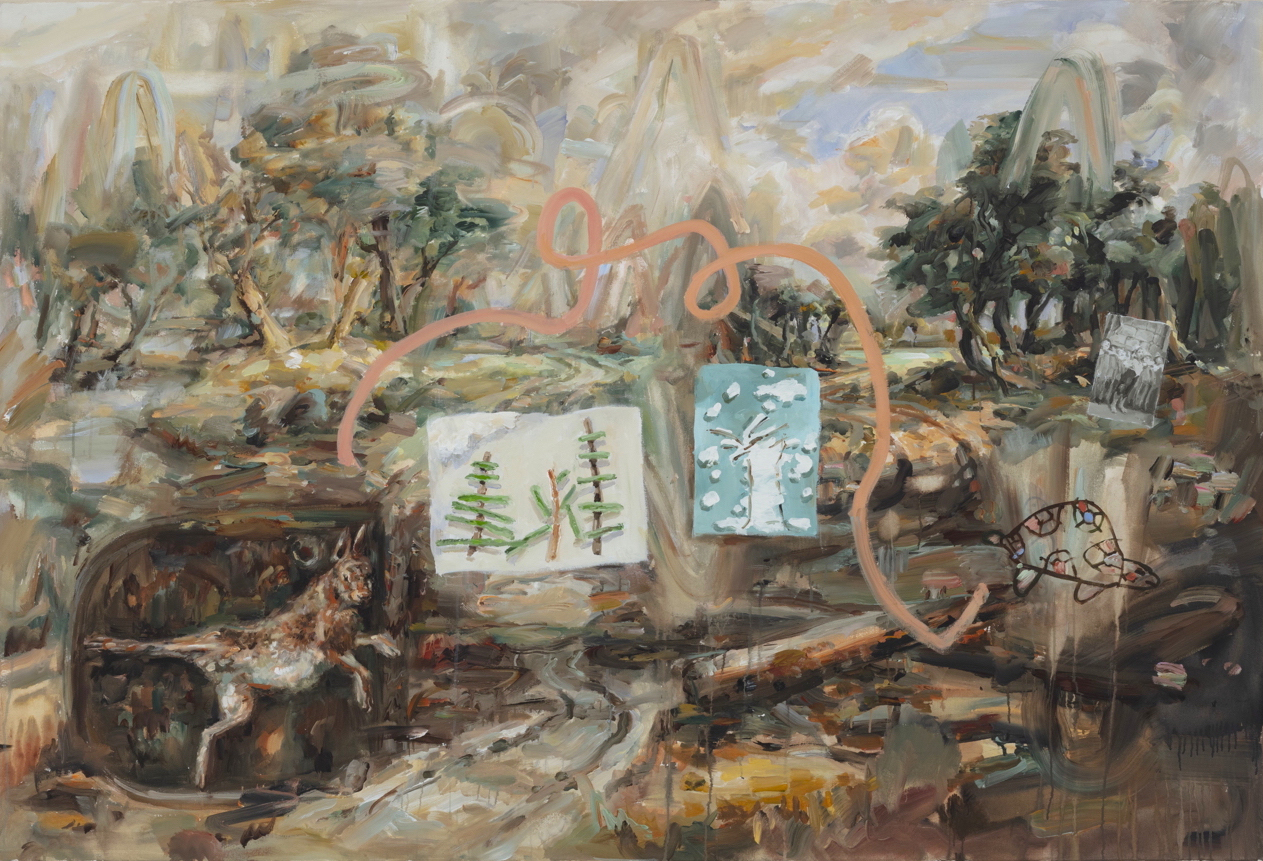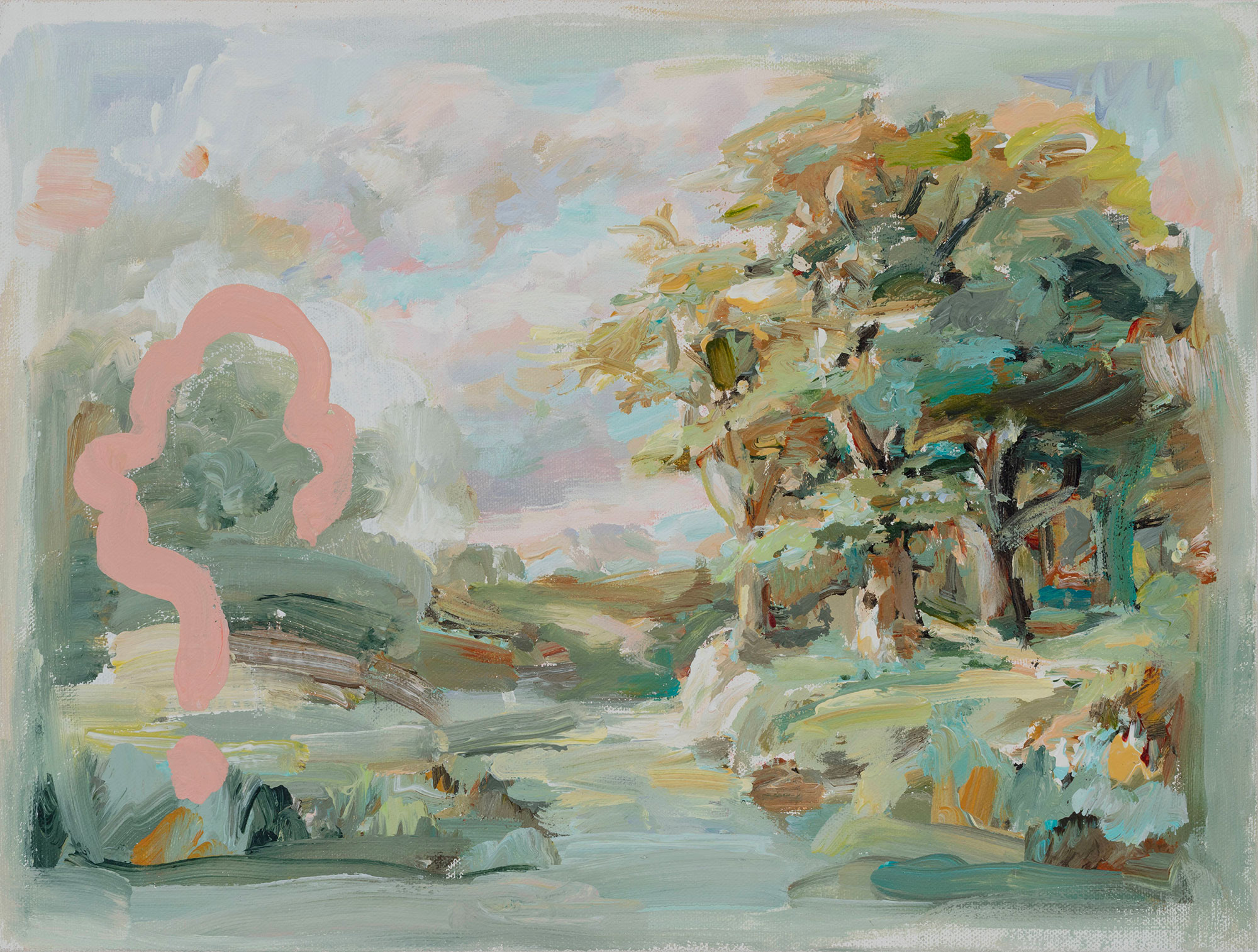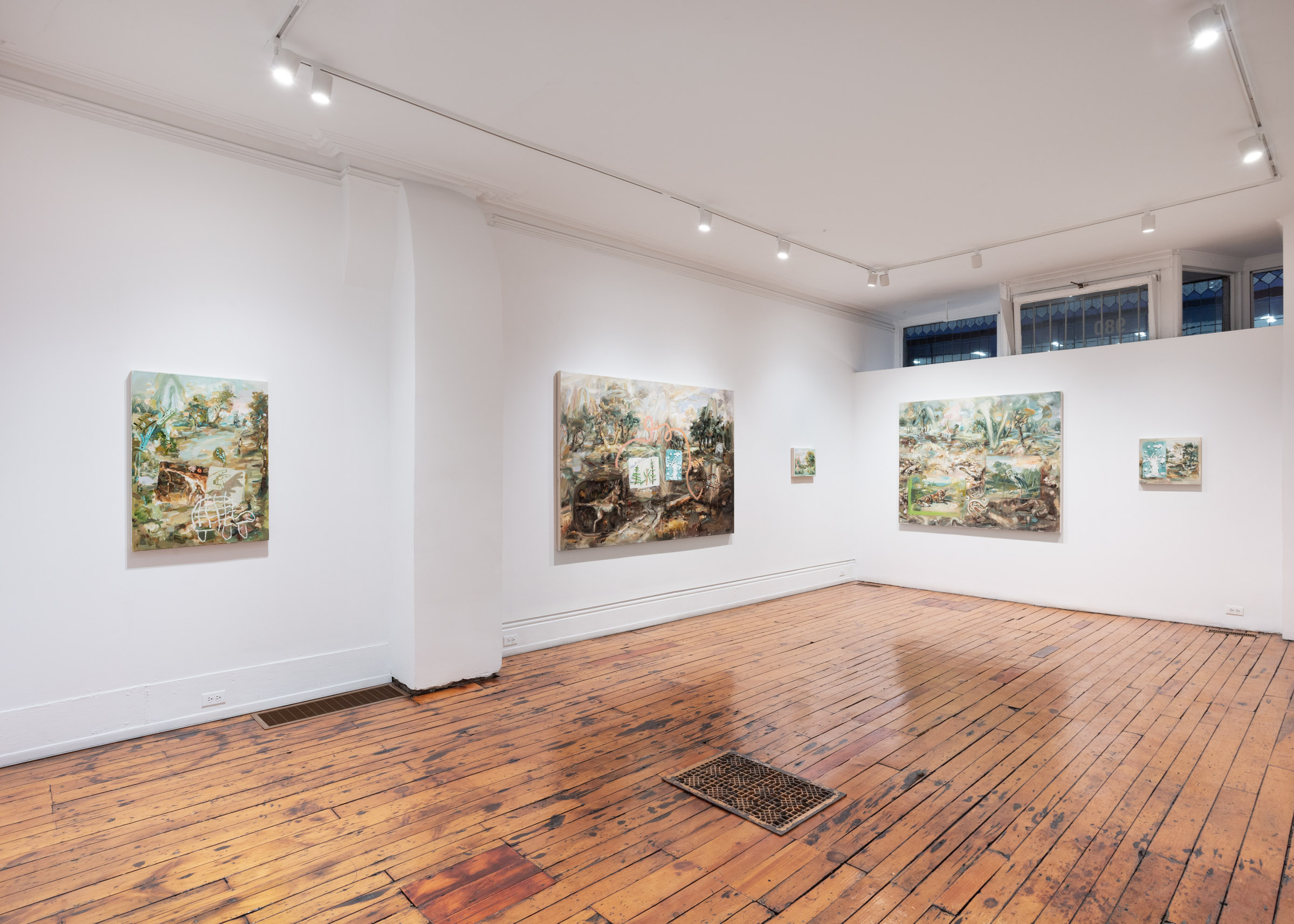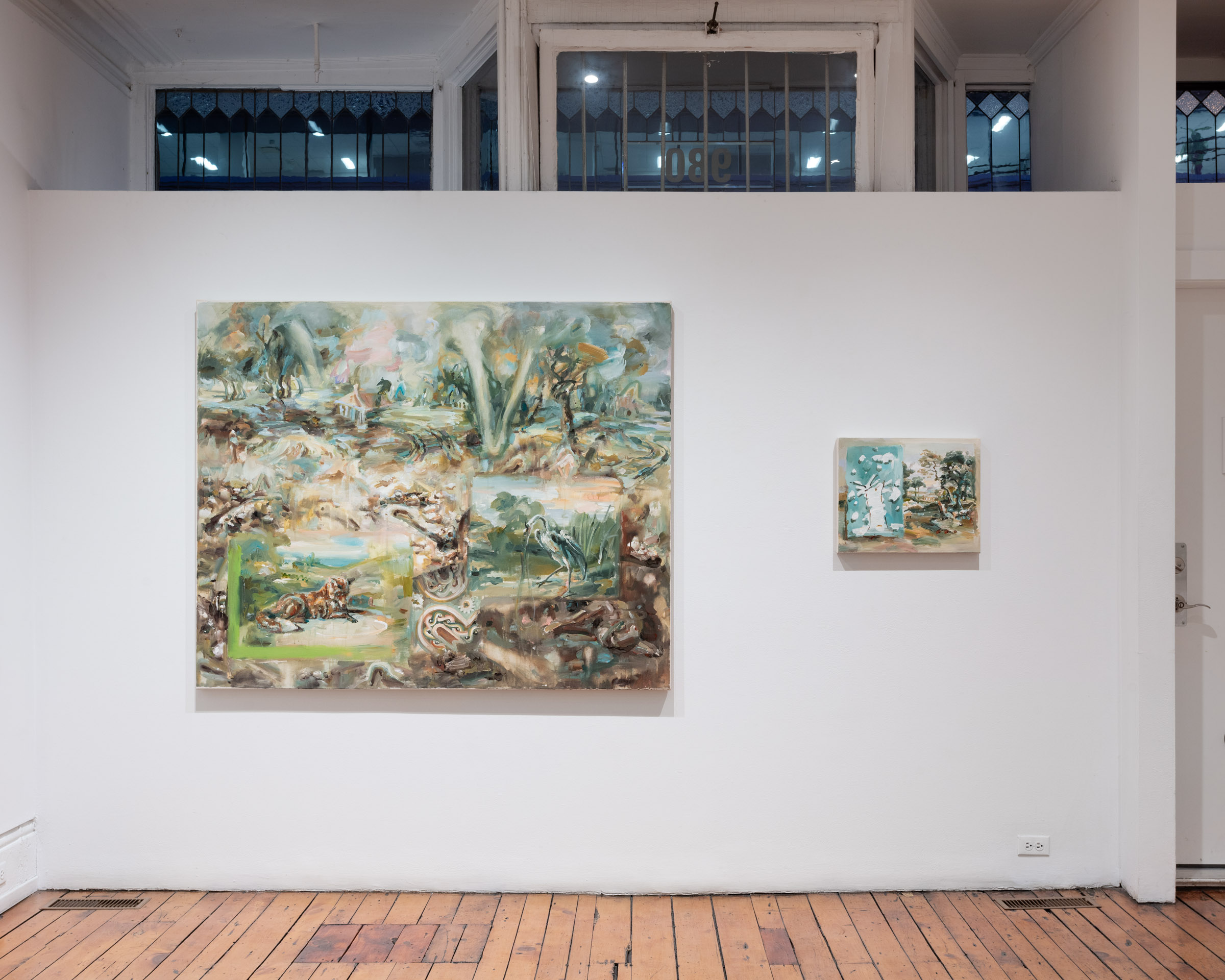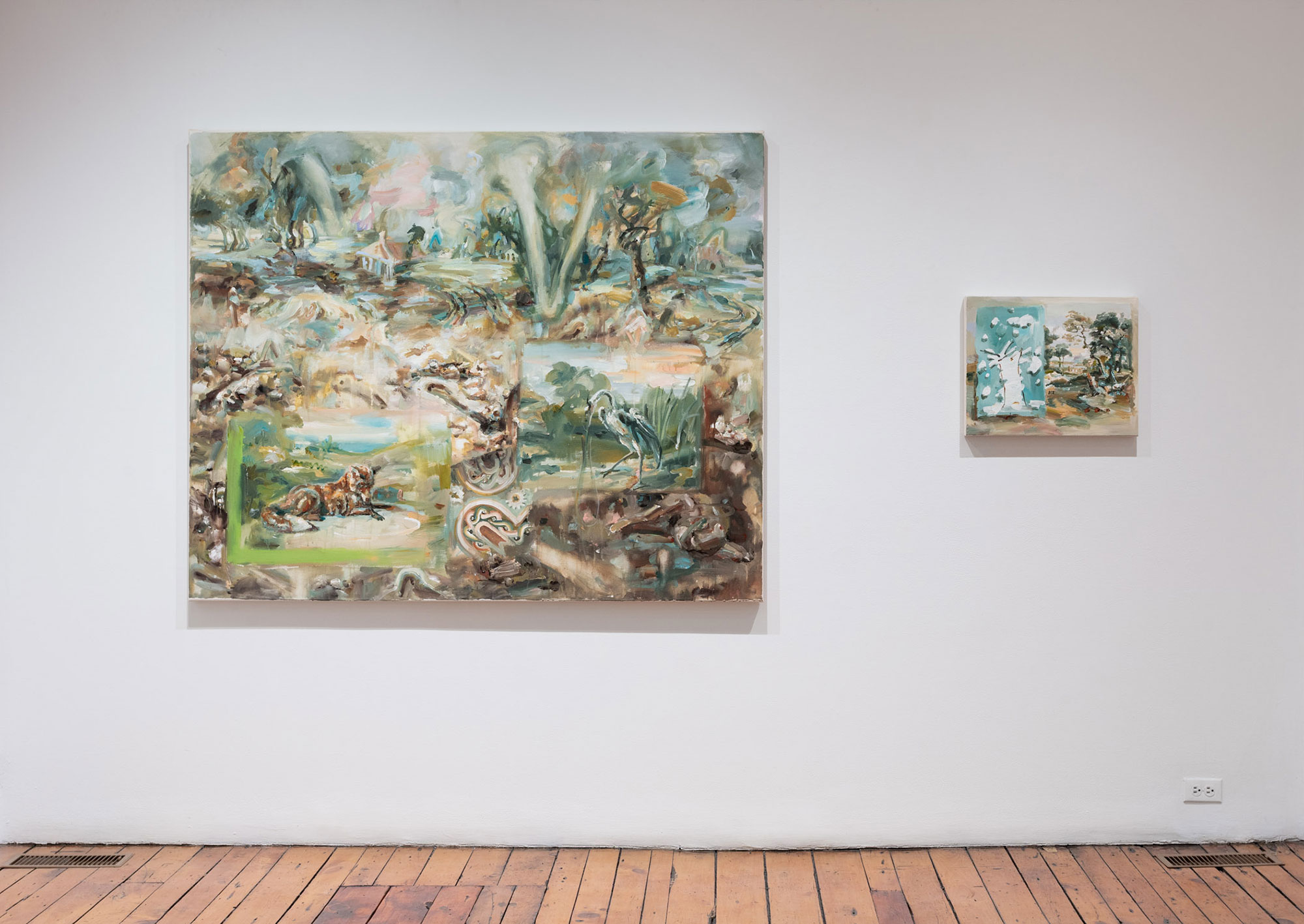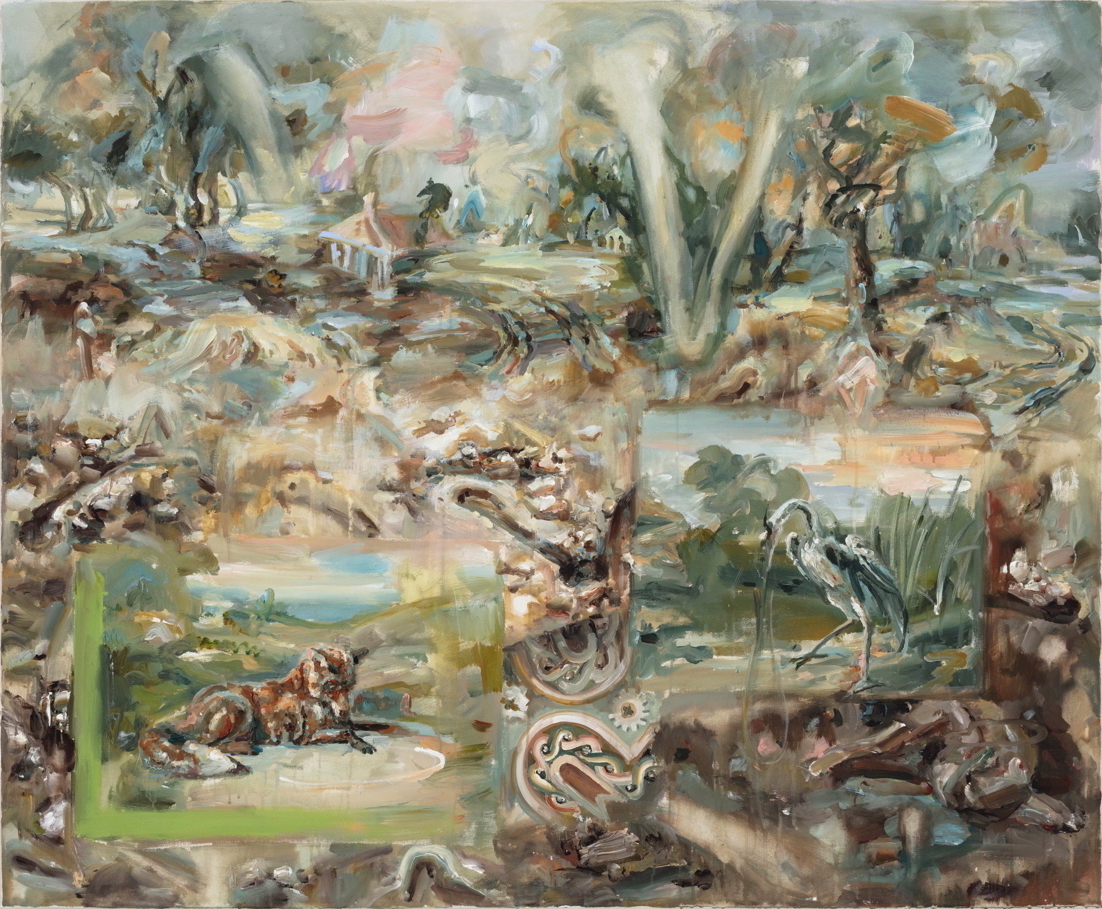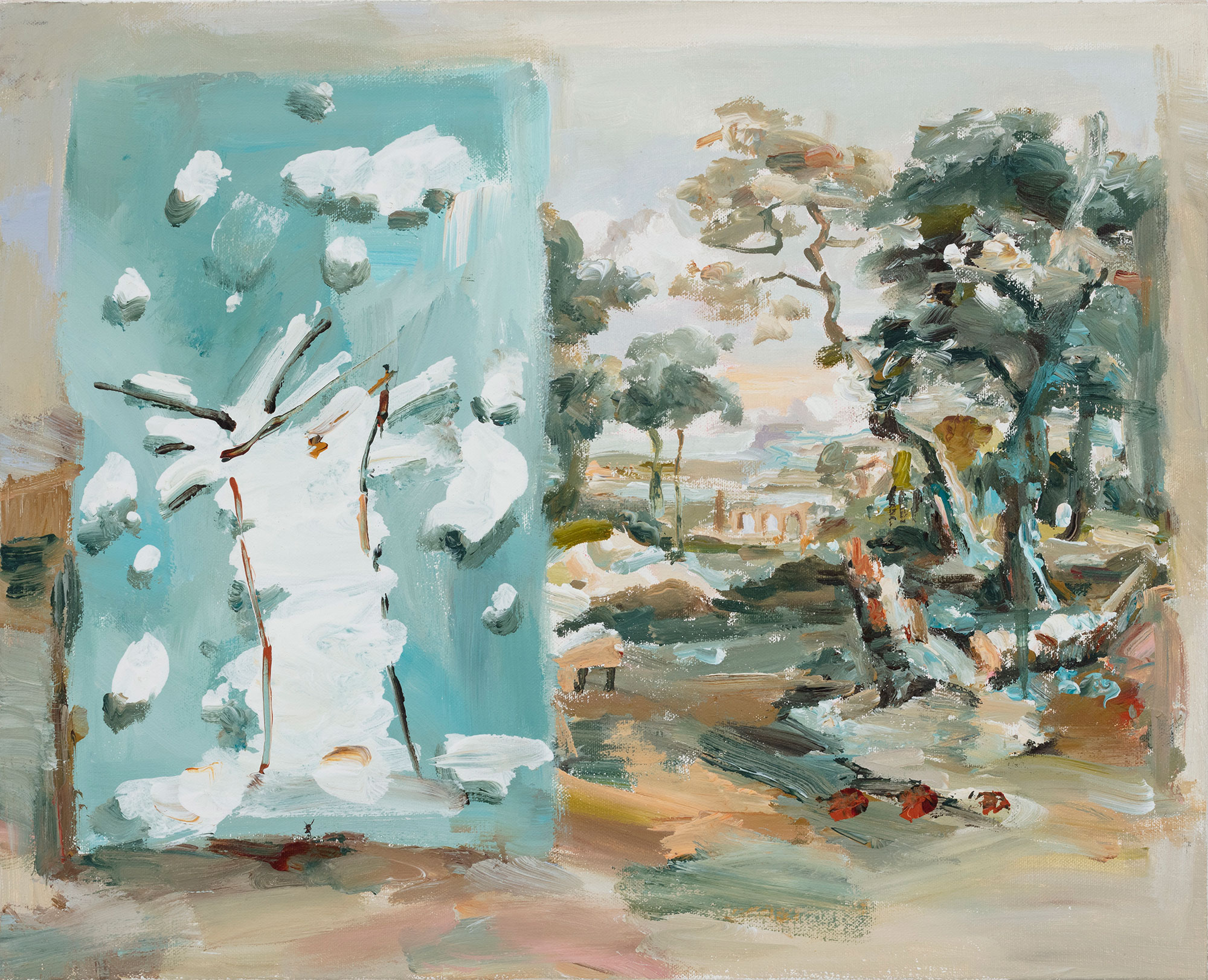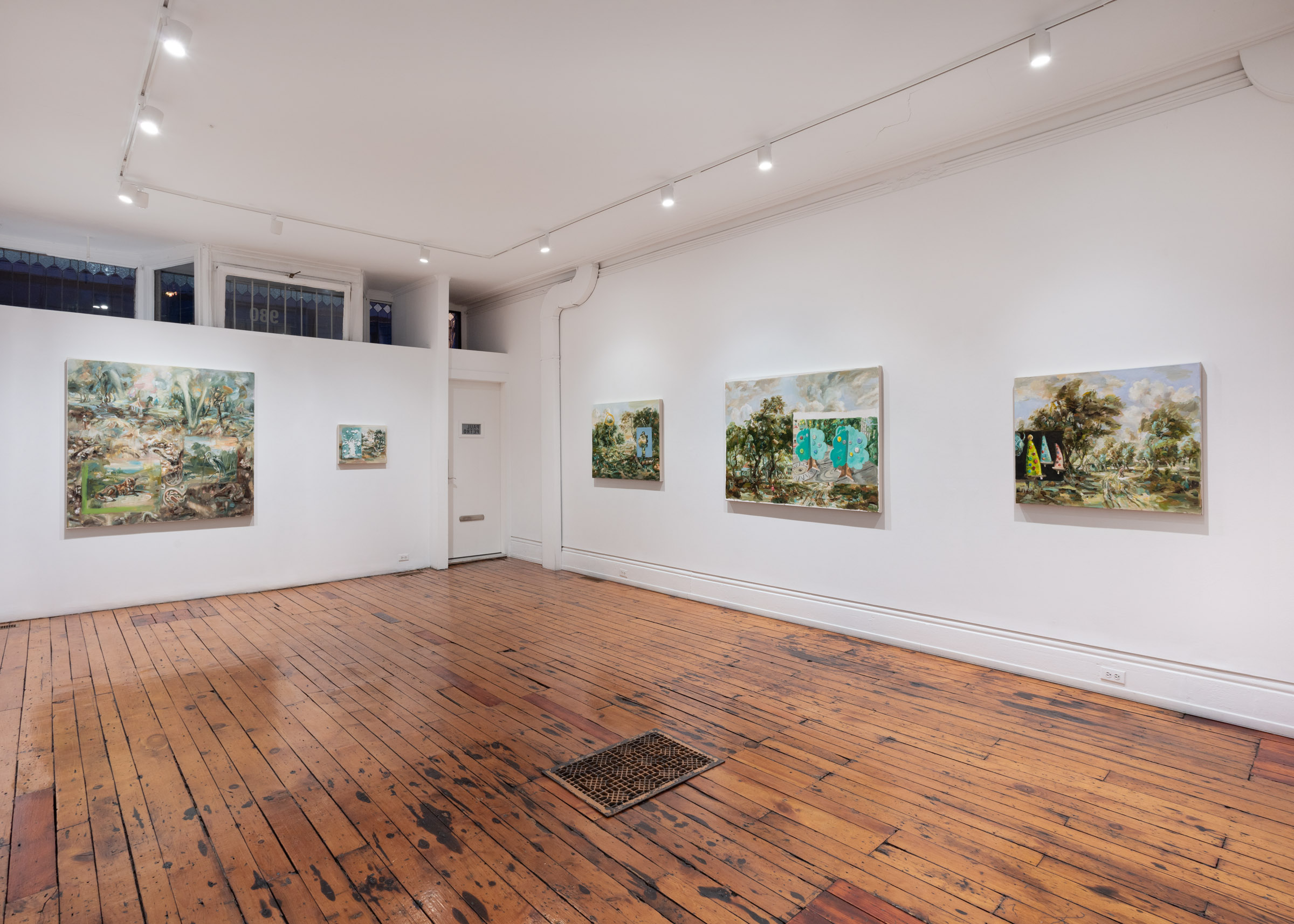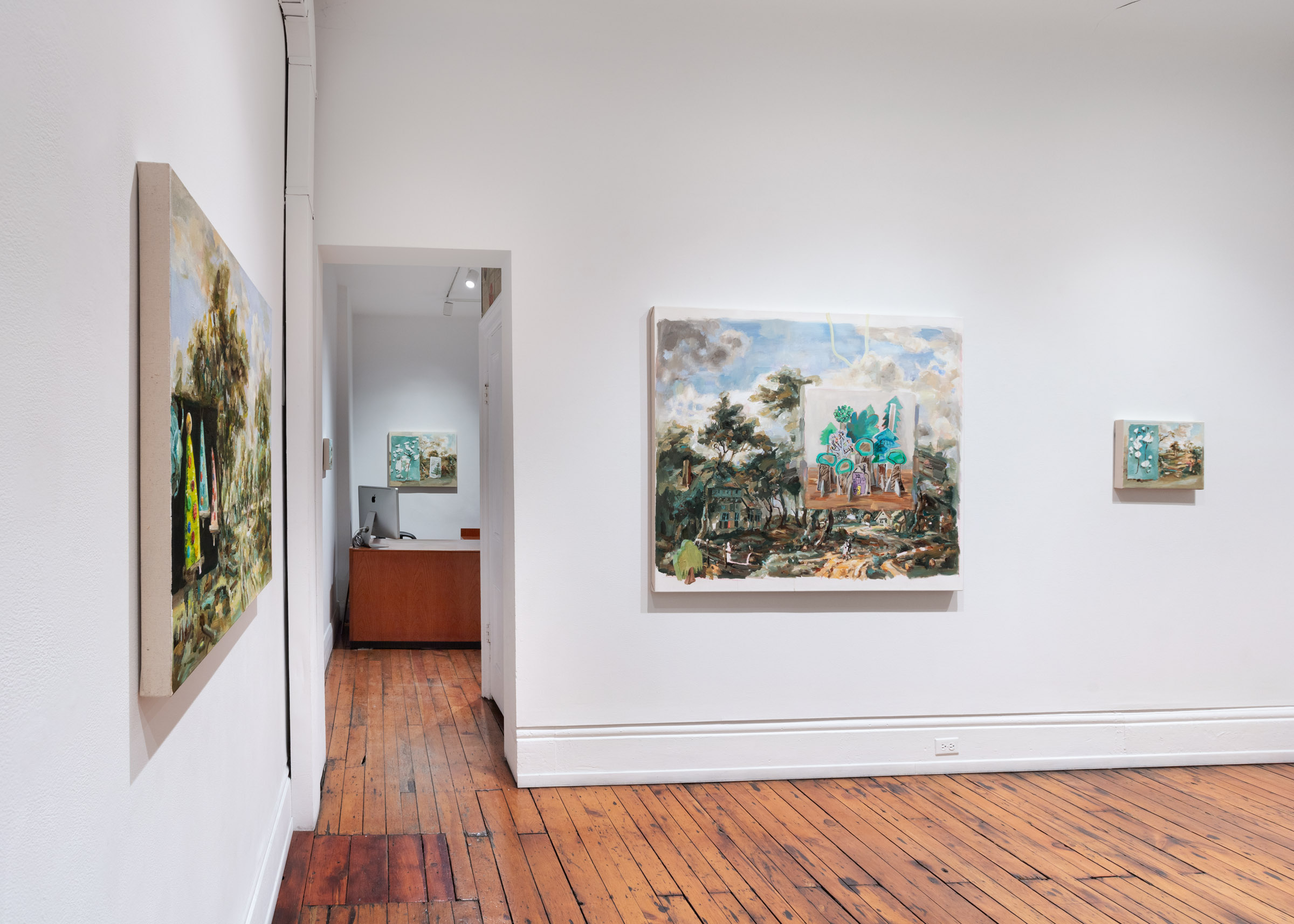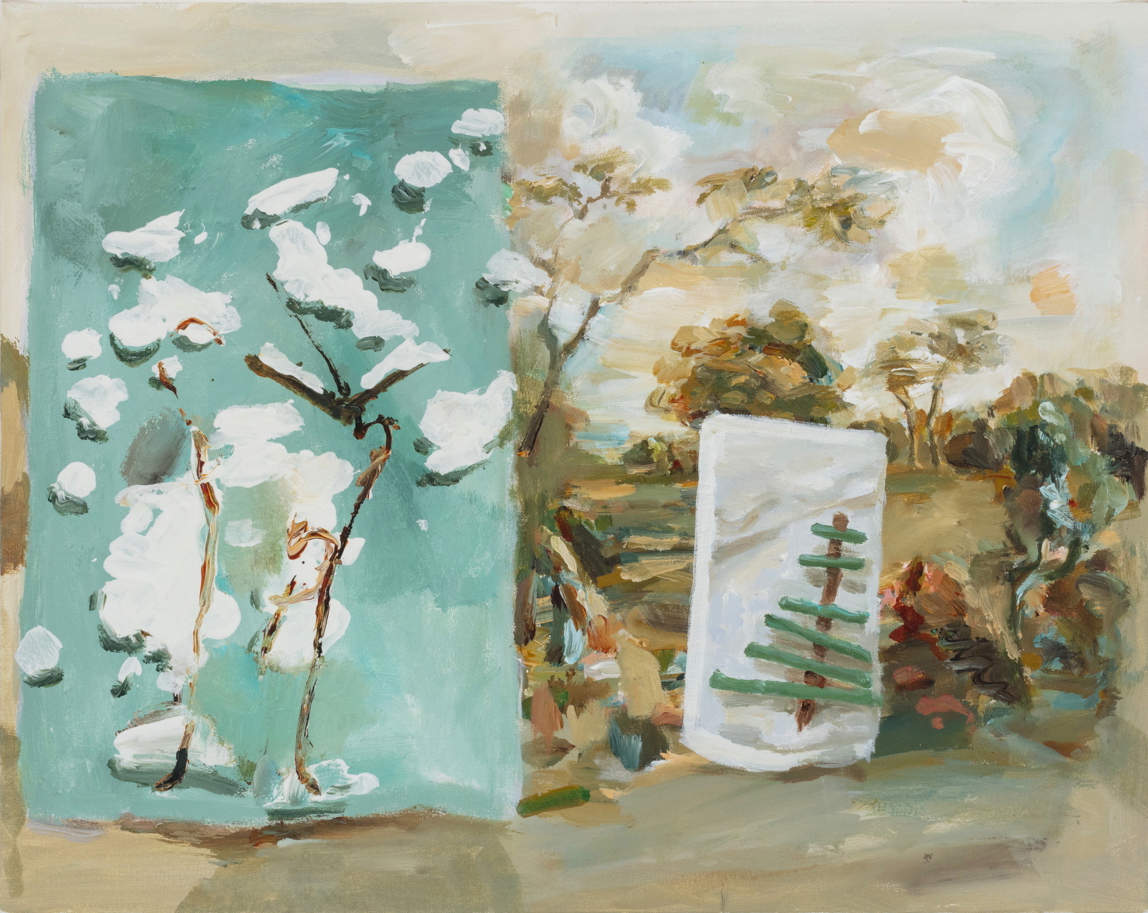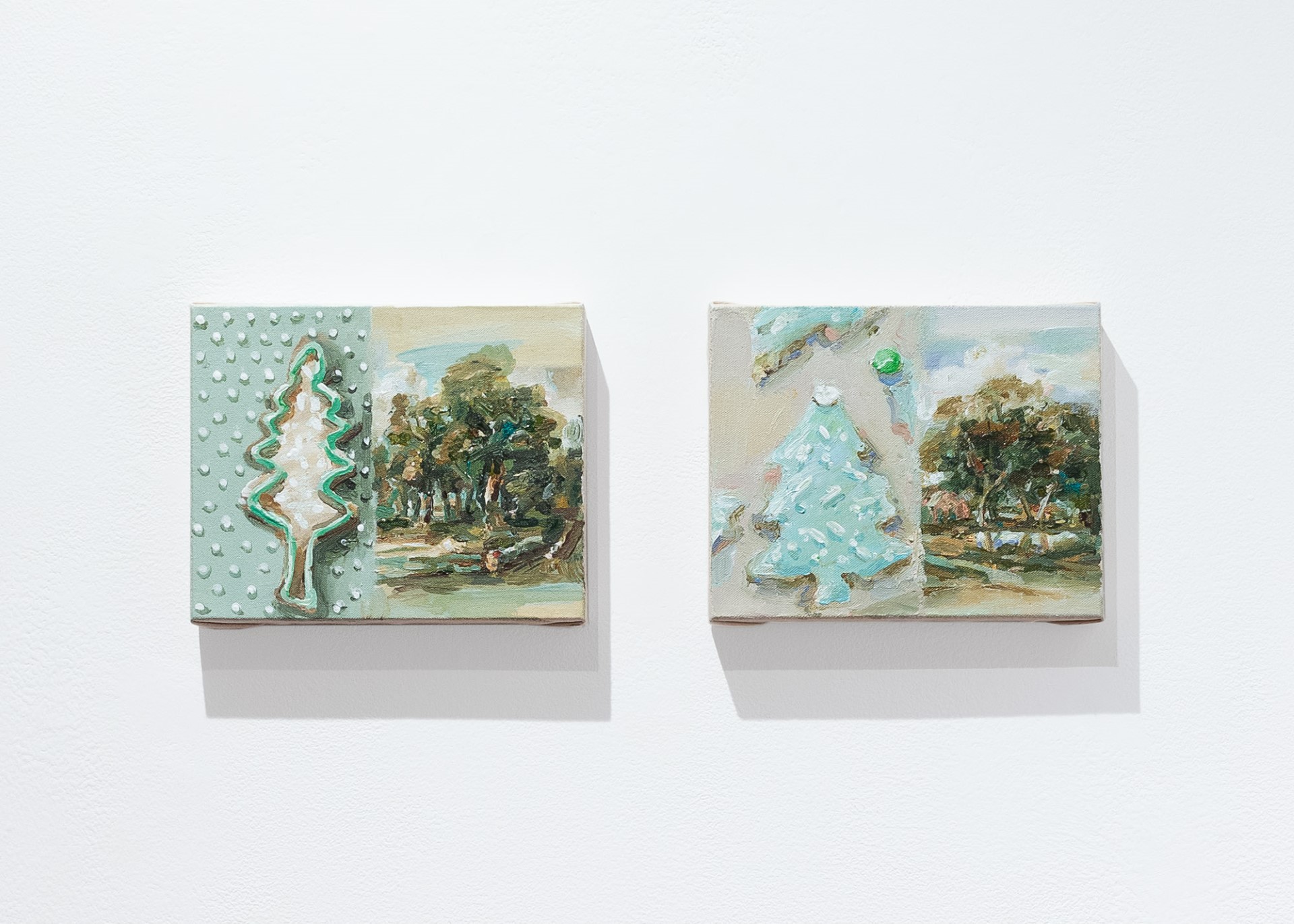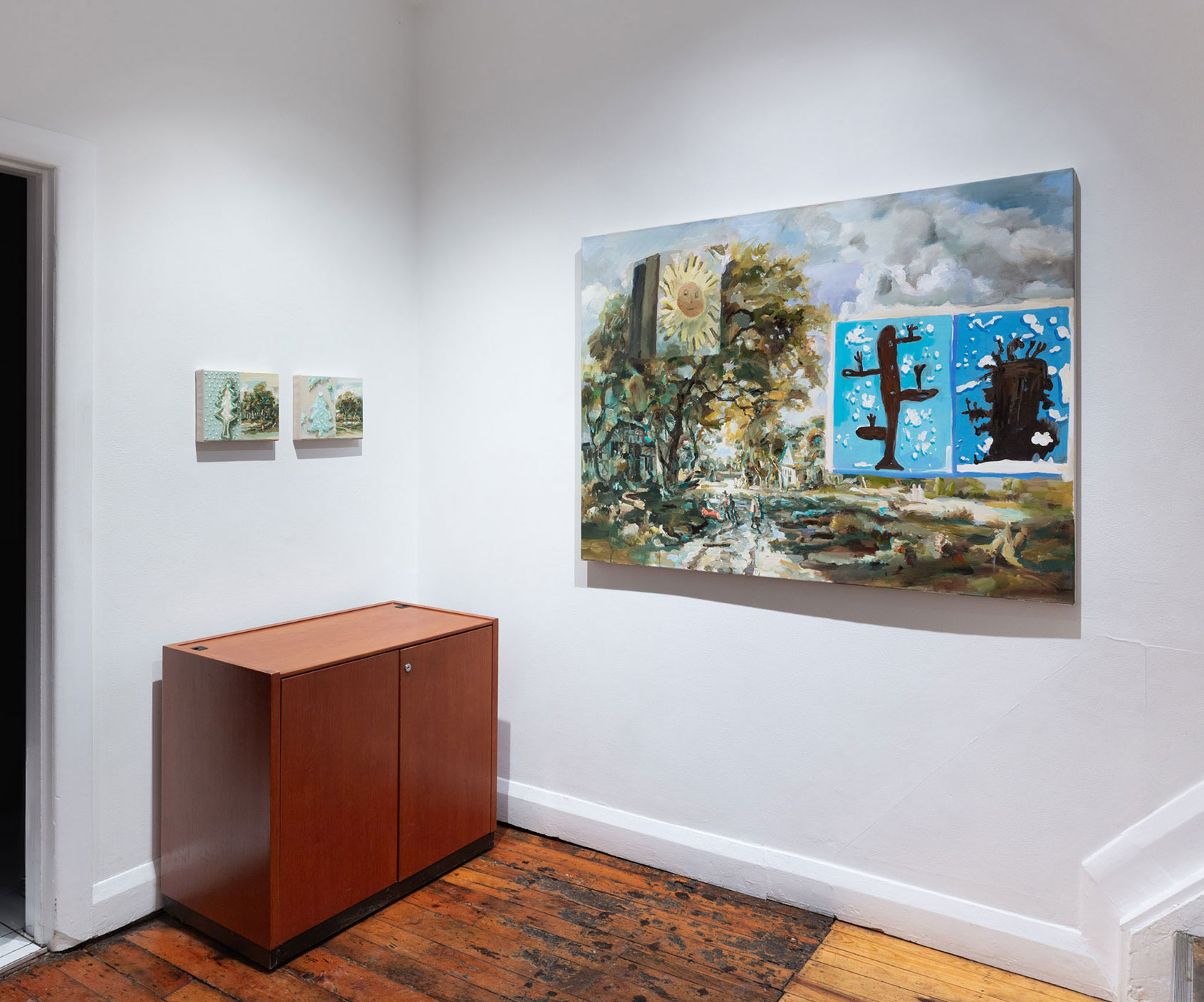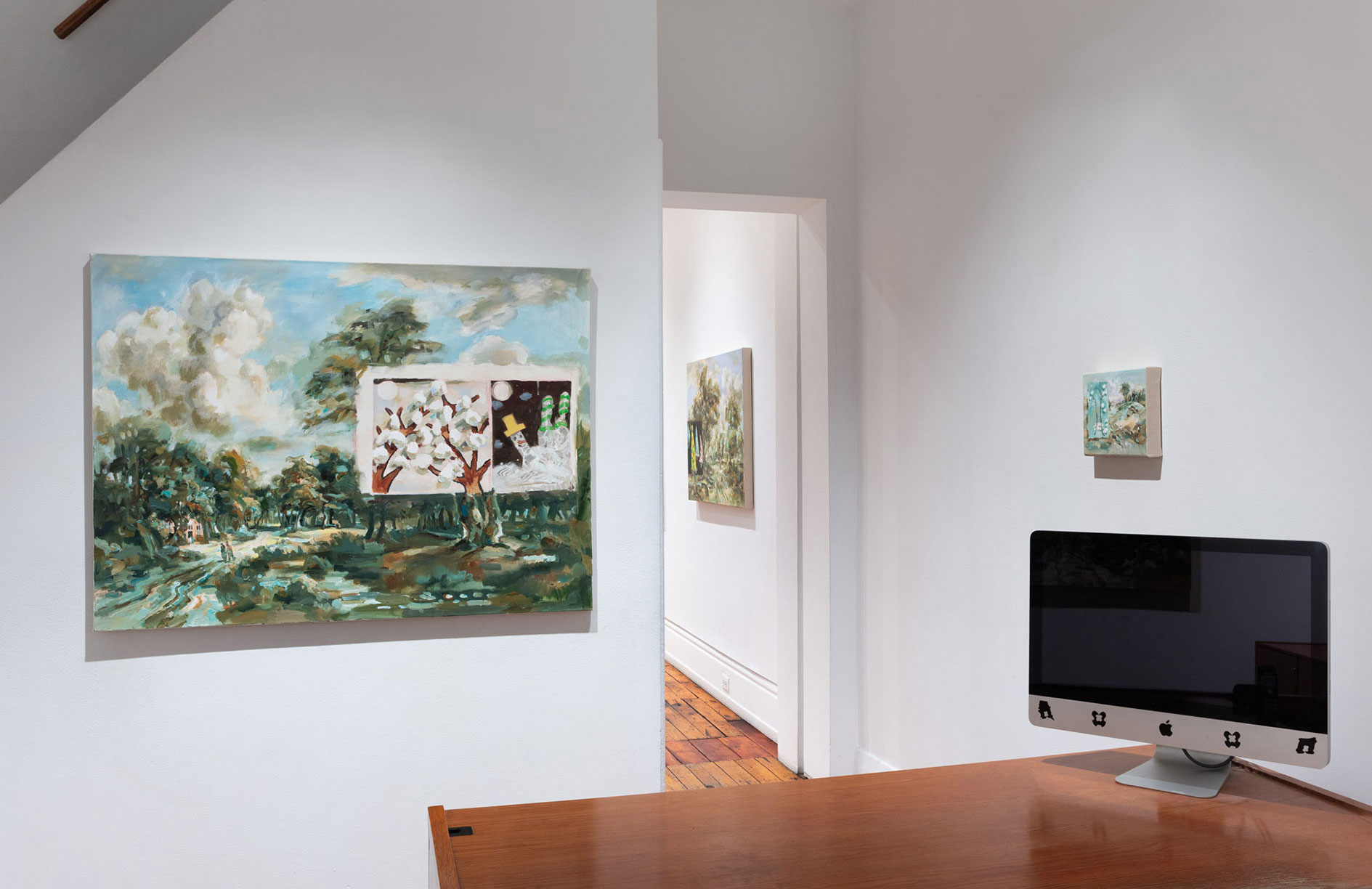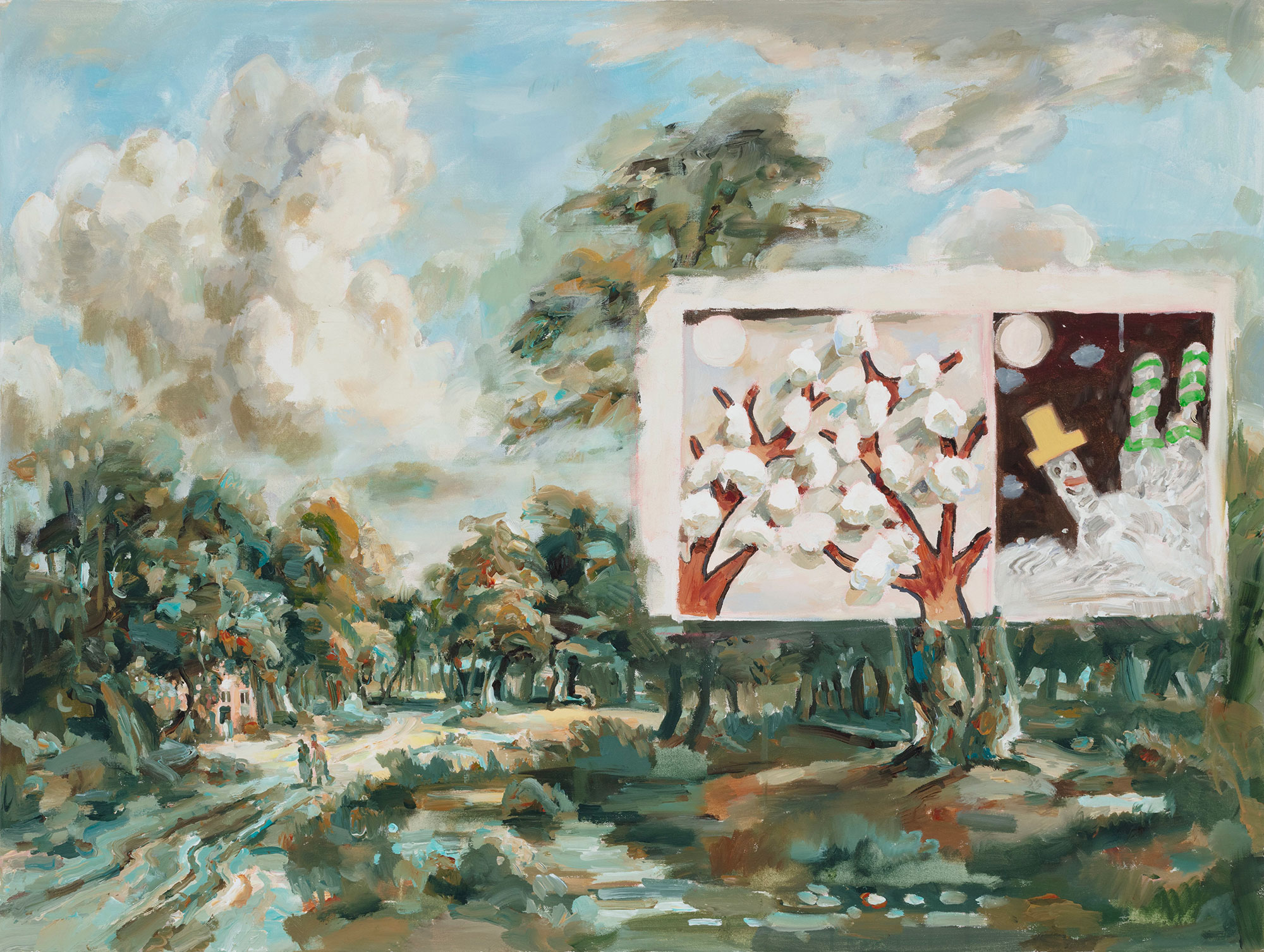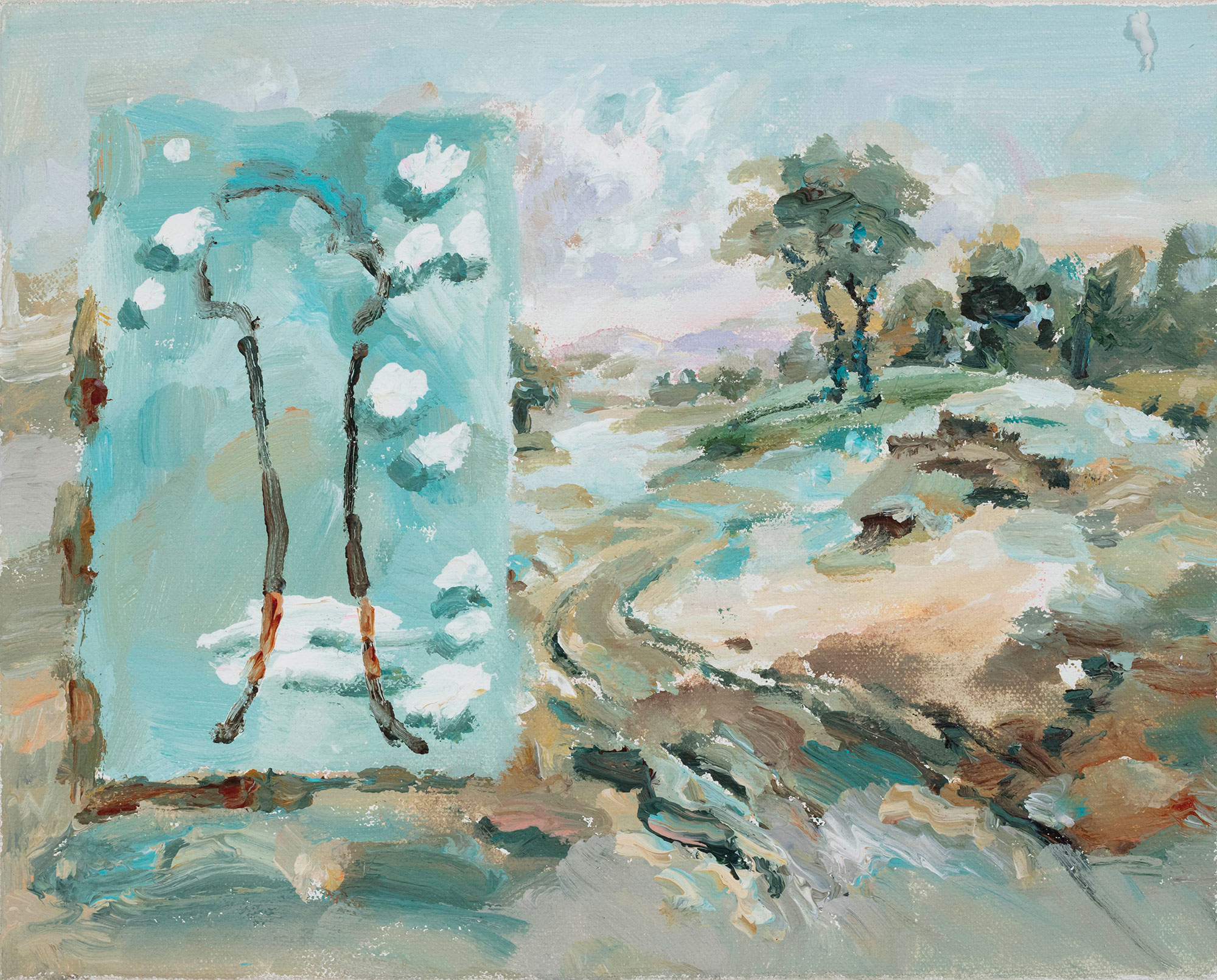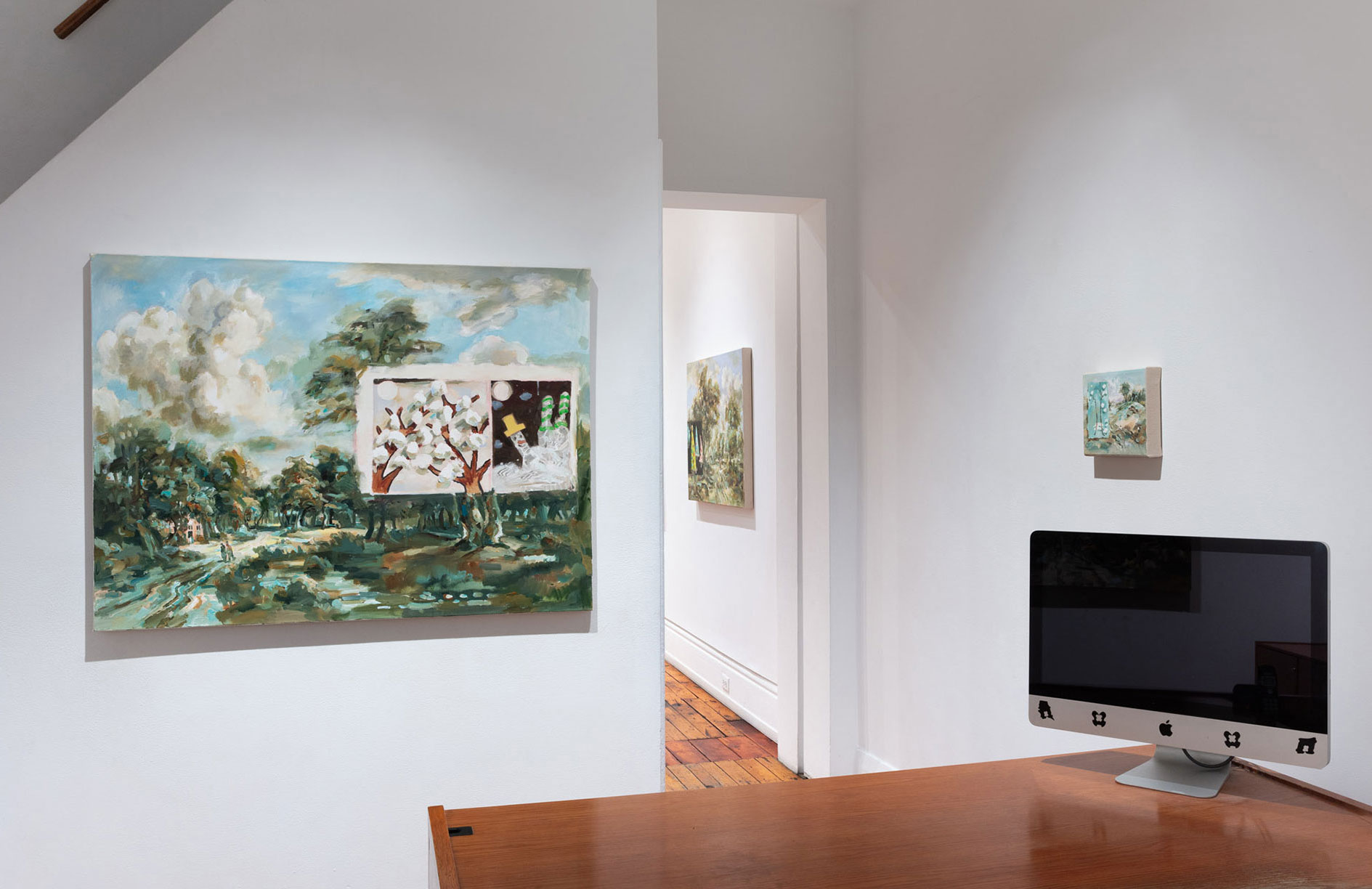Arts and Crafts
Carol Wainio
new paintings
February 23 - March 30, 2024
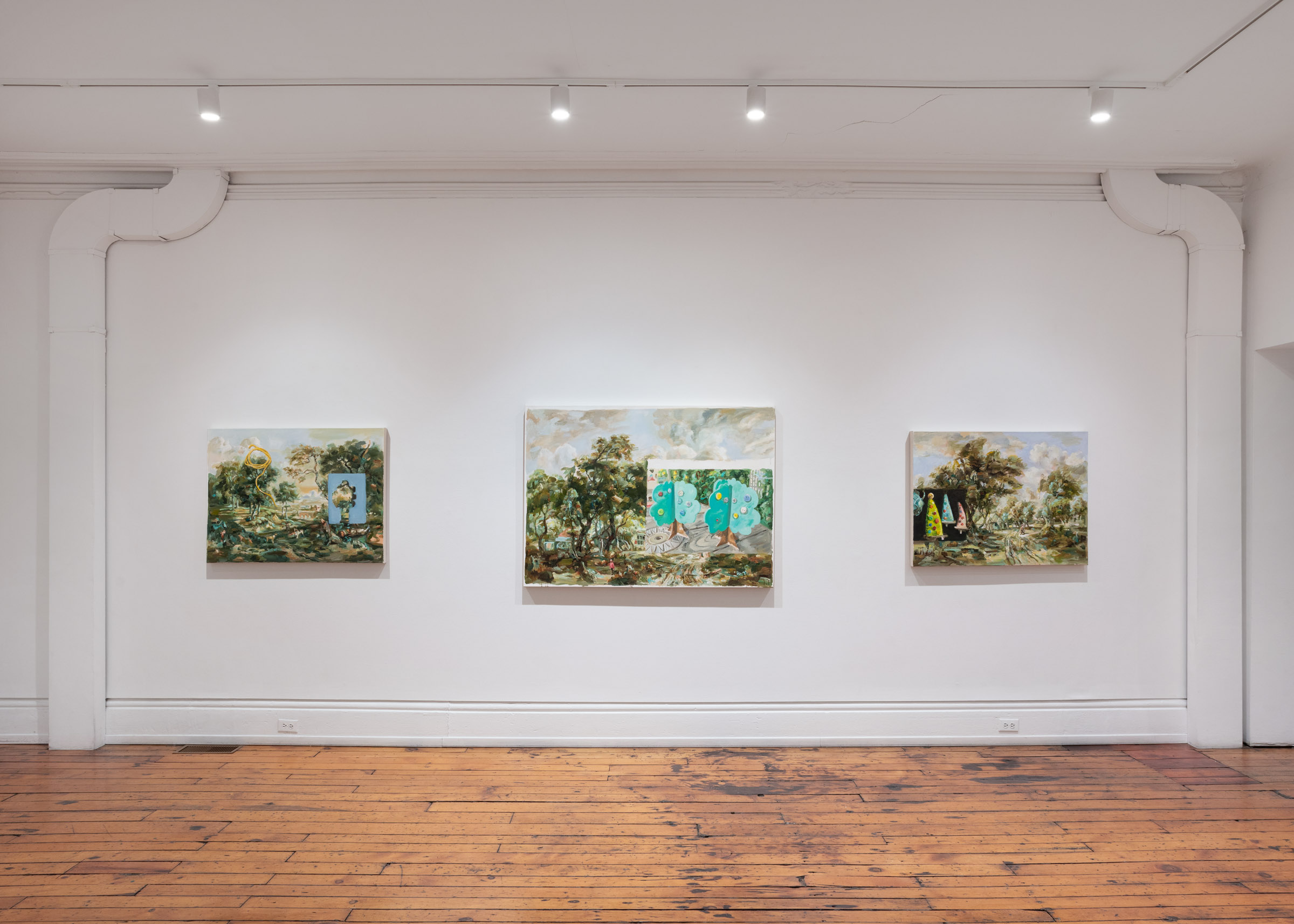
Paul Petro Contemporary Art is pleased to present Arts and Crafts, an exhibition of new work by Carol Wainio. This exhibition follows from Réenchantement, a recent painting survey in Montreal at 1700 La Poste, organized in collaboration with Wainio, Isabelle de Mévius and La Poste gallery staff. La Poste also published a new monograph of Carol's work and it will be available at our gallery. Here are some thoughts about Arts and Crafts:
Present tense…Arts and Crafts
Before Walter Benjamin described the speeding up of modern life as a kind of ‘shrinking of experience’ and ‘disenchantment’, the Arts and Crafts movement advocated the hand-made and beautiful in response to the ugliness and alienation of industrialism and the division of labour. Benjamin, who collected children’s books, also valued storytelling, linking it to craft. As Esther Leslie describes, for Benjamin, “the habitat of the storyteller is the craft milieu”, and “the best listeners are those who forget themselves in a story while making something - knitting, throwing a pot, spinning, or weaving, seized by the rhythm of hand work in which story is born, embedded in memory and passed on”. Storytelling, like craft, requires “a state of relaxation which became rarer and rarer” - from the shock and response of factory work to current technologies that erode self-forgetfulness and experience.
We learn and remember by forgetting ourselves in the making of things. My work uses a slow, historically laden medium to make spaces where modes of representation (past, present, high art and vernacular) engage in a discursive, visceral wondering. Diverse figures from early illustration, 17th century genre painting, or children’s arts and crafts come together to re-stage older narratives of transformation, desire, calamity, scarcity or excess in shifting grounds of paint.
Figures from the past may resonate differently, as quiet metaphors in and for a tense present, in an increasingly extreme climate of weather and polarized discourse, where we sometimes appear to be sliding back to fabulism. In a world of false ‘populist’ narratives, fable’s ancient talking animals or children’s drawings or crafts seem oddly sane, relevant, and plaintively hopeful.
Amongst the lost stories is the essential narrative of reliable seasons. From the labours of the months to ballads that routinely began with a seasonal setting, the seasons provided a reassuring rhythm around which humans and nature coalesced. Even now, they may be among the few things children make with hands and eyes increasingly accustomed only to screens and the tiny shocks of self-reflexiveness – the hundreds of notifications per day that erode the quiet mind necessary for absorption of sights, smells and environment. The alienating shocks of industrial work described by Benjamin have given way to the little shocks of leisure.
The conditions that produced climate change erode not only shorelines but the ability to experience and share seasons. And the loss of reliable seasons as essential rhythm and metaphor - a kind grand récit - erode inner lives, social lives, and politics.
In these paintings, 'FOX' may trick a stork by serving up a meal on a shallow plate accessible only to himself which the stork cannot share. Dangling hares from 17th century genre paintings of dead game may be rotated in space to race with a child’s drawing of a tortoise. Children’s craft projects of trees through the seasons may meet 17th century genre landscapes of peaceful harmony to reflect on how the past may still resonate in the present ground.
-- Carol Wainio, February 2023
Carol Wainio was born in Sarnia, Ontario in 1955. After studies at the Nova Scotia College of Art and Design and the University of Toronto, she earned an M.F.A. from Concordia University in 1985. She taught in the Visual Arts Department at the University of Ottawa from 1987 to 1989 and was an assistant professor in the Department of Visual Arts at Concordia from 1989 to 1998. Wainio lives and works in Ottawa, where she is an adjunct professor at the University of Ottawa. Carol Wainio is a recipient of the Governor General's Award in Visual and Media Arts (2014).
Wainio's exhibition The Book, curated by Diana Nemiroff for Carleton University Art Gallery, contained works from 2002 - 2010, and toured throughout Canada. A comprehensive hardcover catalogue is available. Wainio’s paintings were featured in the solo exhibition Old Masters, curated by Crystal Mowry for the Kitchener Waterloo Art Gallery, March - April, 2013. Her work was exhibited at the Montreal Museum of Fine Arts as part of the group exhibition Her Story Today, October 2015 - August 2016. In 2018 she was included in the inaugural group exhibition We'll All Become Stories at the new Ottawa Art Gallery. In 2019 she was named the Artist-In-Residence at the Diefenbunker, in Ottawa, which led to the exhibition Disasters for Little Children. Wainio's work was included in the group exhibition Painting Nature with a Mirror, at the Musée d'art contemporain de Montréal, December 2019 – June 2020. Wainio’s paintings were the subject of the solo exhibition Réenchantement at 1700 La Poste in Montreal, November 2023 - January 2024.

































